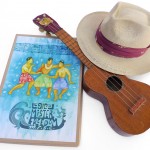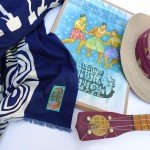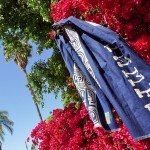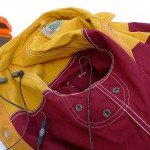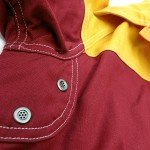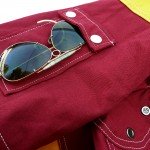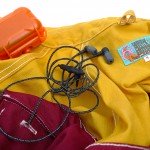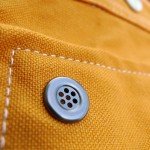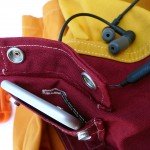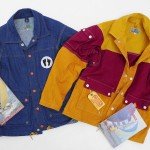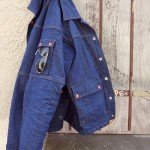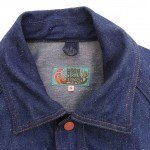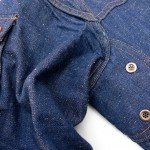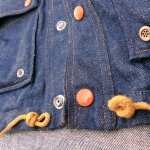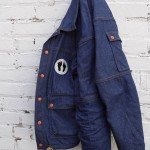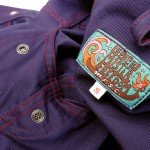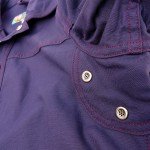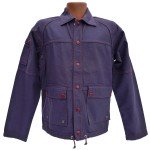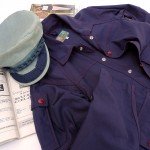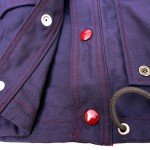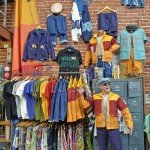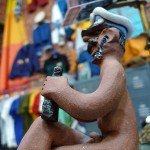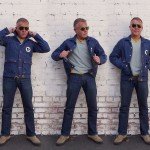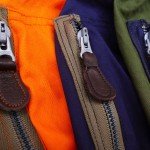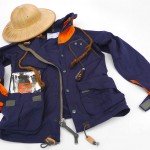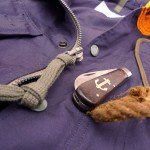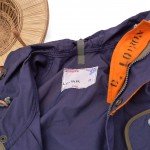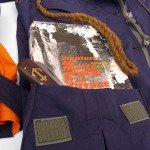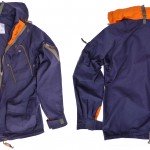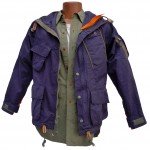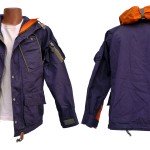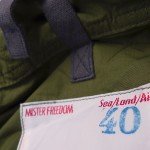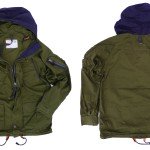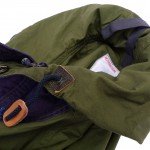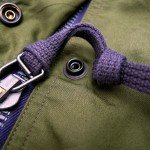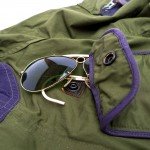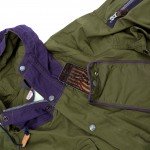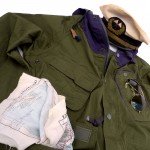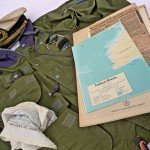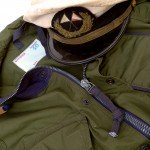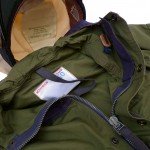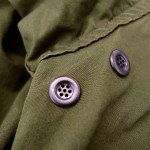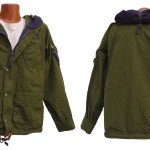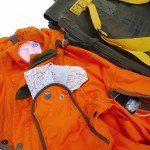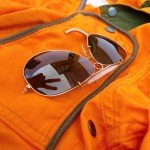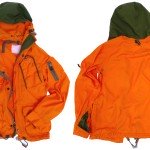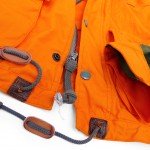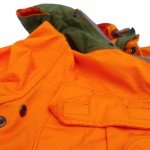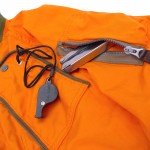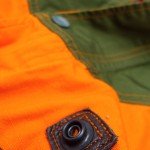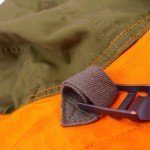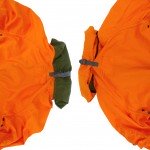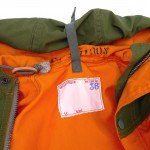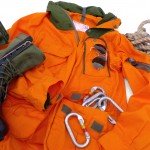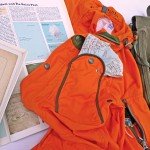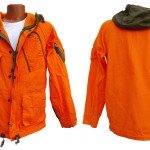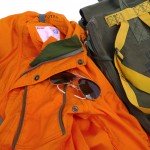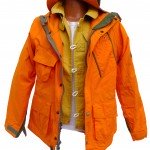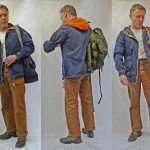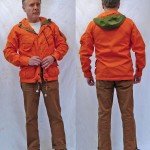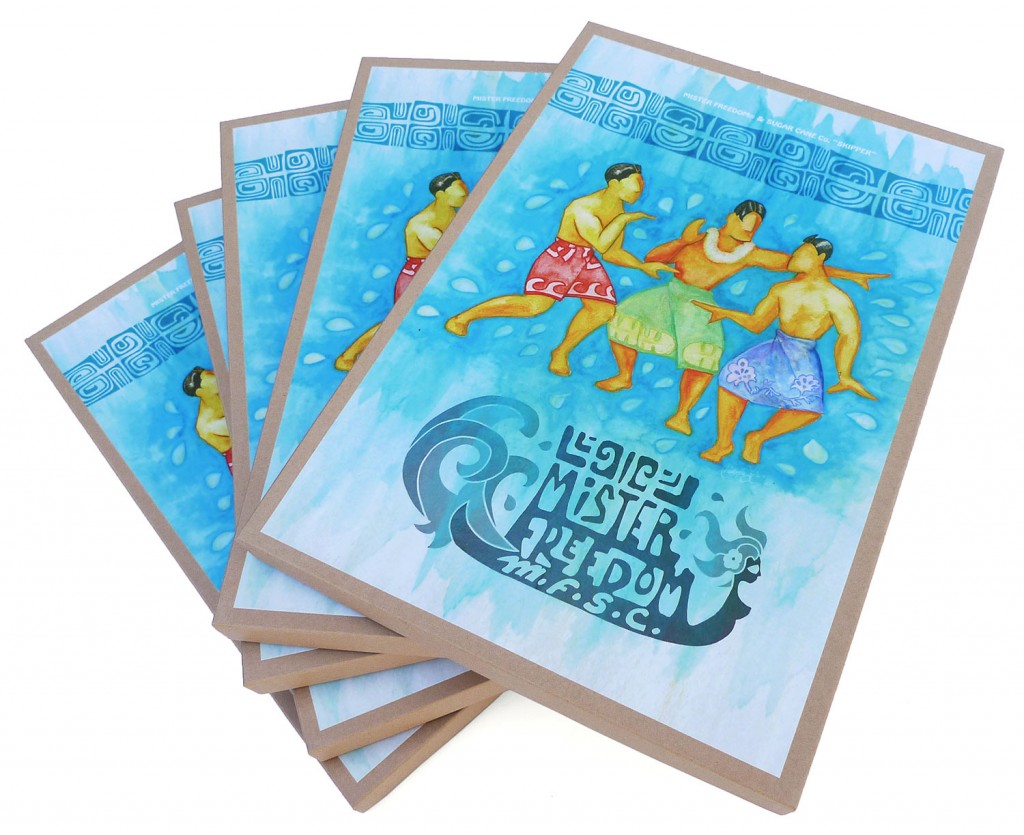
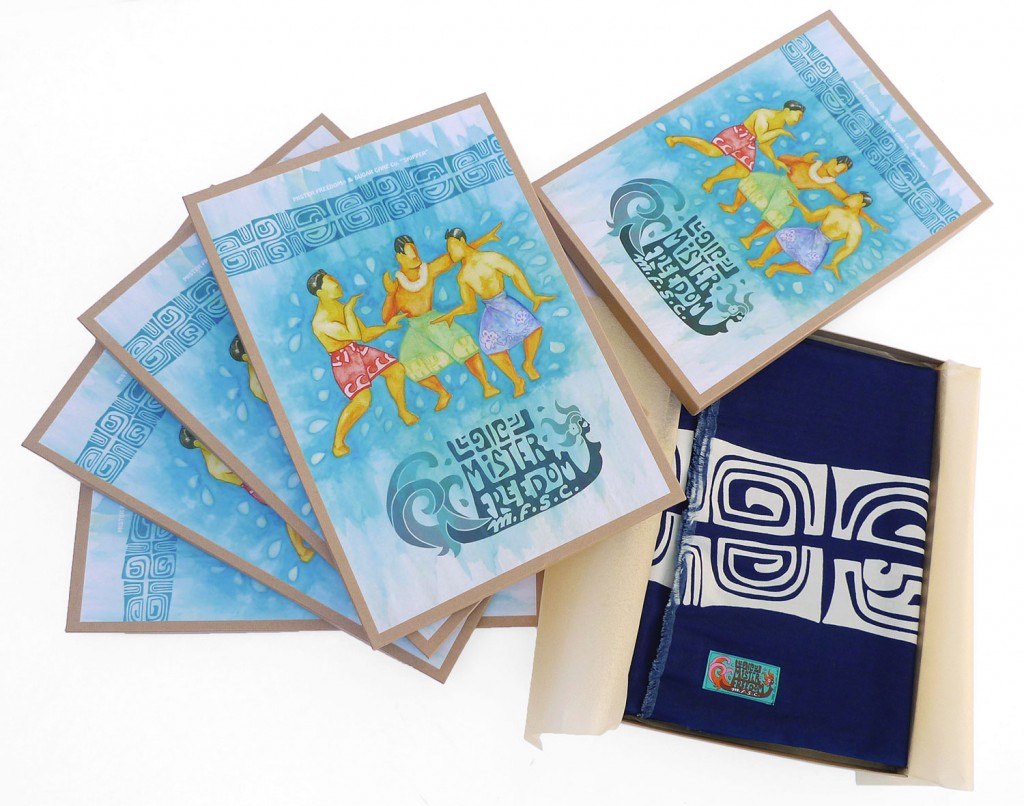
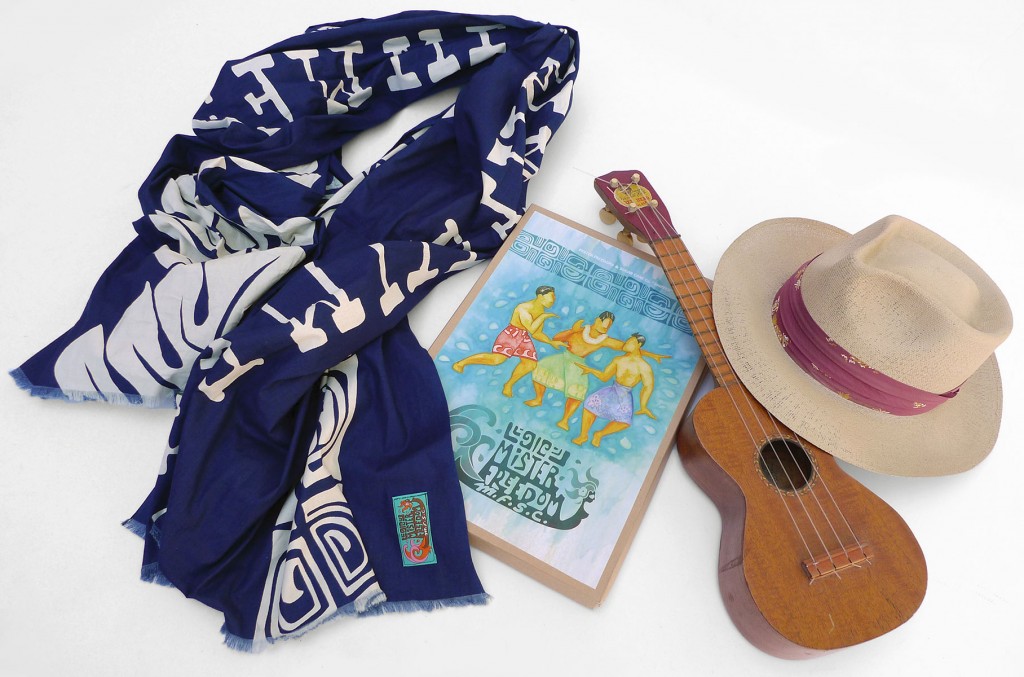
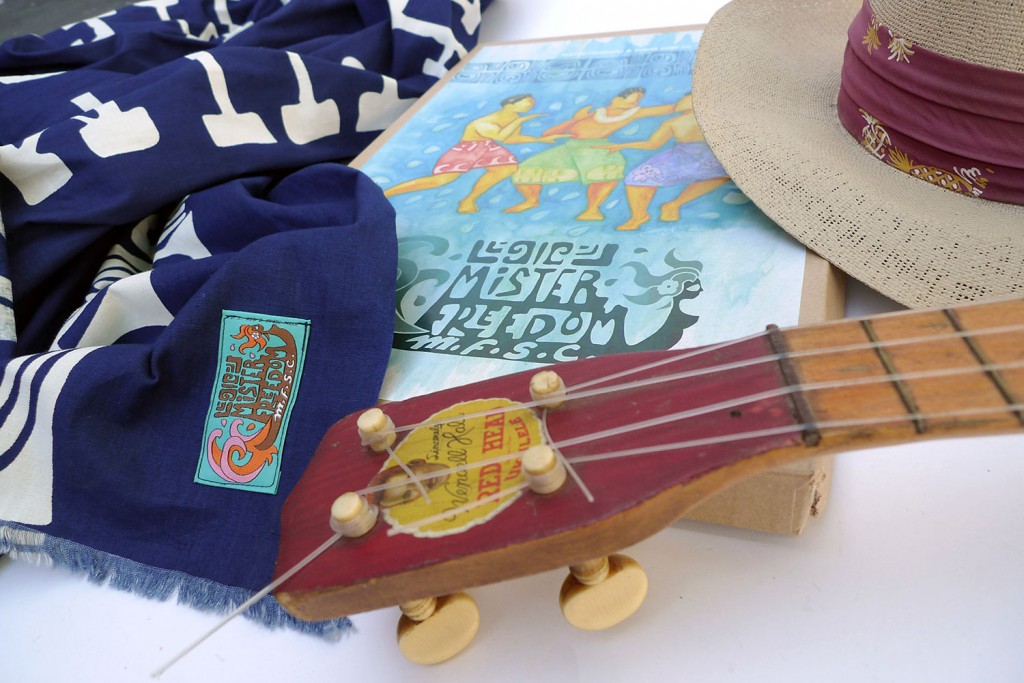
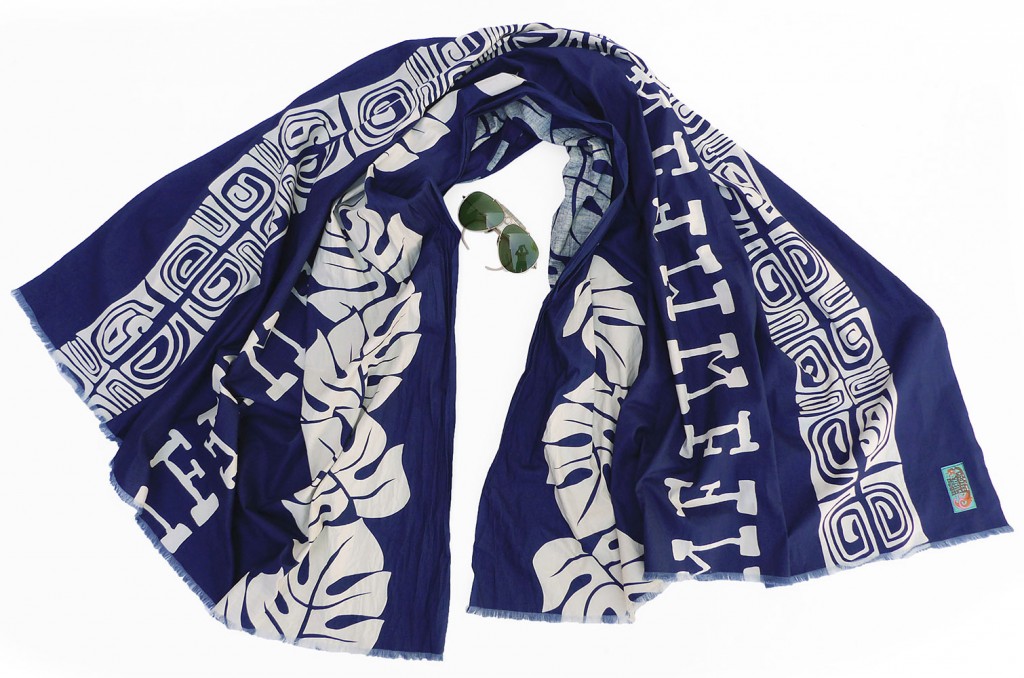
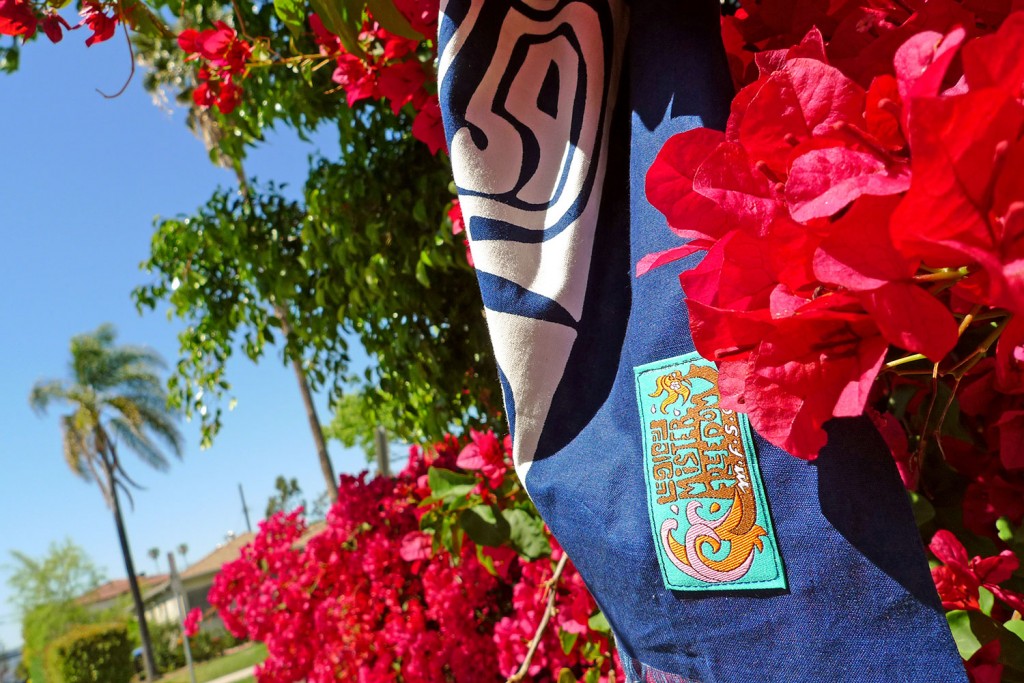
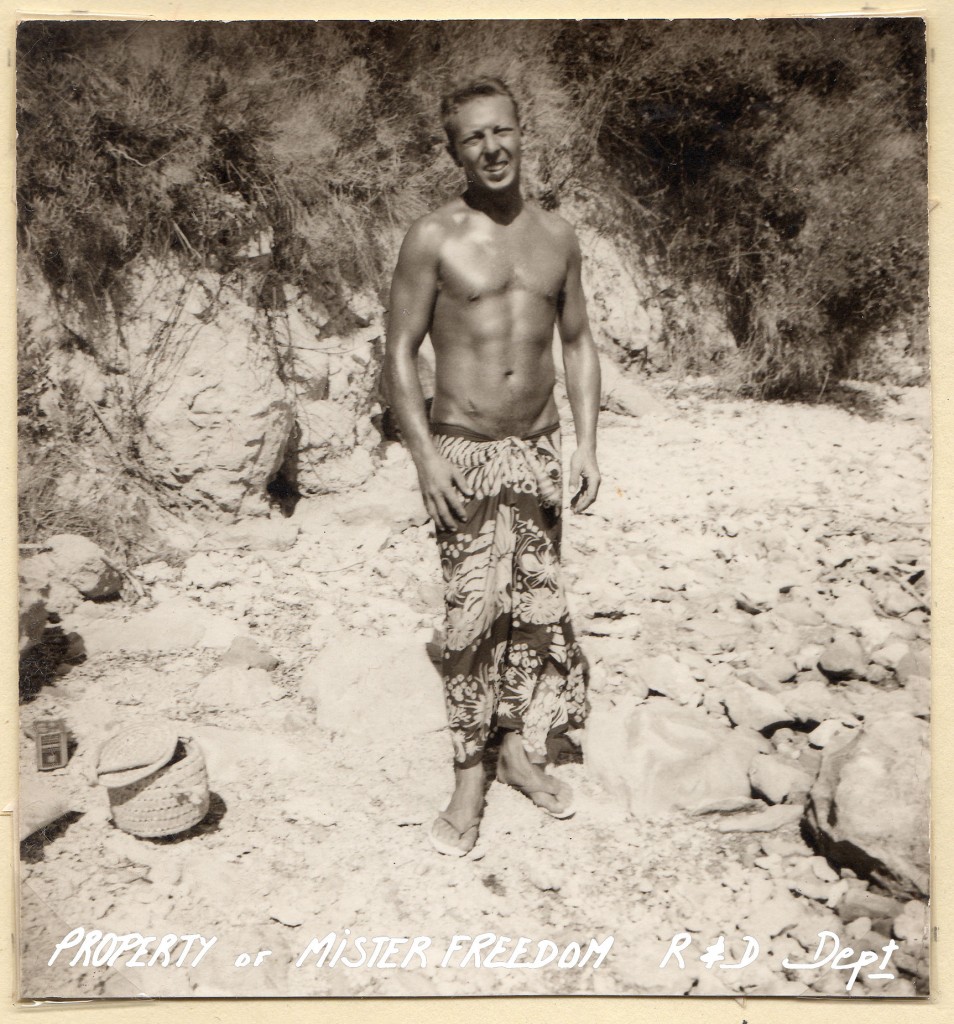 Gérard Loiron, Club Med, Greece, circa 1957. 
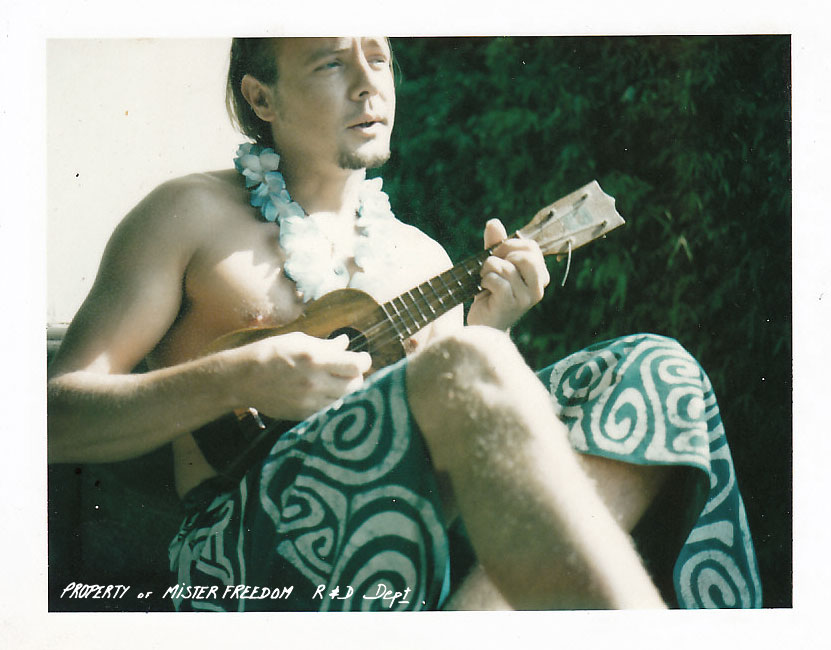
Le Pareo MF®
Indigo poplin, discharge print.
“Skipper” Collection mfsc Spring 2016
Bringing you yet-another ray of sunshine, whiff of tiare and flash of bougainvillea with this latest installment of the Mister Freedom® Skipper Spring 2016 mfsc collection!
But not before spinning some yarn…
For guaranteed success on job interviews, may we kindly recommend sporting le pareo MF®. Now, don’t over-accessorize Depp-style, you can leave the lei and uke at home. However, done properly, wearing a colorful wrap cloth shirtless and barefoot in front of the hiring committee should instantly secure you a top-ranking position, while envious co-workers watch and brood. If anything, you will leave behind that coveted indelible first impression of self-confidence.
Please email sales@misterfreedom.com to let us know how your interview went.
Since you asked, my family lived in Abidjan, Côte d’Ivoire in the mid 1960’s. I was too young to remember , but I was told we lived in Marcory (not Cocody), and my Dad worked at a major oil company in Plateau, right across the laguna. I had a nanny by the name of Josephine, and spoke better bambara than French. Every morning, my Dad would fire up his Johnson outboard motor to get to the office, the Shell building. Some commute. Sure beat traffic. I do remember from later memories that he really loved wearing pagnes (that’s how we called pareos/sarongs in Africa) around the house, but it appears that he also showed up to work that way on occasion during our Ivory Coast days. Gonna have to try it at 7161 sometime…
-
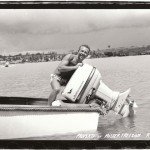
-
Gérard Loiron, Abidjan, Cote d’Ivoire, 1966
-
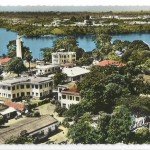
-
Abidjan, Plateau. Baie de Cocody
Now, the pareo as business attire might be an acquired taste for westerners, and a challenging option for Minnesota residents, but the minimalistic approach of a single wrap cloth as a daily outfit has always sounded very tempting to me. Definitely perfect retirement gear for old skippers.
If the fascinating Kon-Tiki raft expedition of 1947 led by explorer Thor Heyerdahl was an attempt at proving that the first settlers of Oceania sailed west from South America to populate the remote Pacific islands of Polynesia, archeological discoveries are now pointing in the opposite direction, i.e. eastward voyages originating in South East Asia.
Indeed, pottery found in 1952 in New Caledonia have linked the ancient Asian Lapita culture with the later Polynesian culture. Most experts now favor seafaring theories with an east-to-west expansion. Apparently, the ancestors of Polynesian people originally came from Taiwan, of course gradually, starting some 5,000+ years ago. Those early adventurers had beat the challenge of sailing into the wind on ancient catamarans, surviving the thousand and one perils of what would through generations add-up to a 7,000 miles voyage bound for terra incognita in unchartered waters…
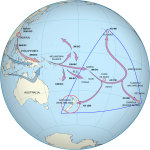 Pacific voyages and settlements of the Māori and Polynesian people. For the anecdote, the word Lapita, coined by the two archeologists responsible for discovering the ground-breaking pottery, was merely a phonetic understanding of an expression locals used to describe the digging site foreigners and their team excavated from. Canak folks would point at the spot and say “xapeta’a”. Assuming that exotic-sounding sound referred to New Caledonian’s ancestors in the local tongue, the American scientists named that newly-discovered ancient culture Lapita. Turned out the expression actually literally translated to… ‘the place where one digs’.
Not many iPhone selfies of Lapita people sporting paréo survived the island-hoping journey in the Pacific around 800BCE, but it doesn’t hurt to imagine that, upon arrival in uninhabited present-day Tahiti, some of the descendants of the original navigators wore woven loin cloth in the style of the Malayan sarong. Just don’t go quoting me on that during your next Oceania Anthropology convention.
-
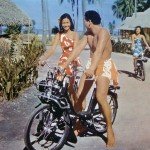
-
Solex advertising.
-
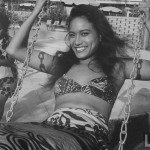
-
Tarita Teriipaia, on set of “Mutiny Of The Bounty”, 1961 (Grey Villet for LIFE)
-
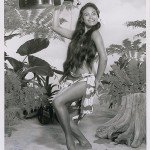
-
Tarita Teriipaia, 1962
-
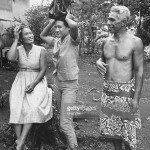
-
Tarita Teriipia with family, 1961 (Courtesy Getty Images)
-
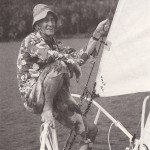
-
Skipper Bernard Moitessier, 1985 (Photo Véronique Lerebours)
Un-related to the Lapita is the fact that our handsome MF pareo is made of 100% cotton indigo-dyed selvedge popeline, discharge-printed. The print is a combination of bits of vintage graphics with a 1960’s Tiki vibe that we put together for your visual entertainment. I’m pretty sure that the swirling shapes represent waves in traditional Polynesian art. The monstera leaves are inspired by a vintage Tahiti shirt form the Mister Freedom® archives.
Because of the bleed-through effect typical of discharge-type prints, the reverse side of the fabric also distinctly shows the graphic.
The indigo color is light-sensitive and your pareo should fade with repeat beach-session exposure and with each Upa-Upa dancing contest involvement.
The cloth dimensions are about 69’’ by 41’’ after an initial rinse, one-size-wraps-all. Please note that although le Pareo MF® is intended to be used as a sarong-type waist wrap, for both man and woman, the versatile little bugger will adapt to your imagination and serve as a beach blanket, a scarf, a luau dress, a baby carriage, a turban, a mook, an escape rope, a back pack, a furoshiki, a superhero cape, etc…
 One way to do it. Notice they made me wear clothes, for everyone’s sake. This collectible item from our Spring 2016 SKIPPER collection comes in a fancy cardboard box featuring an original MF® watercolor doodle. How ‘bout that as a present suggestion for a loved-one, for a clambake-inclined colleague or a beach-blanket bingo partner?
The MF® pareo is designed under the California sun -and obviously too much of it- by Mister Freedom® and manufactured in Japan in collaboration with Sugar Cane Co.
SPECS:
A collectible mfsc original, inspired by elegant vintage island fashion, traditional Polynesian wear, and business formal attire.
FABRIC:
100% cotton light-weight poplin, selvedge, indigo-dyed and discharge printed. Milled and printed in Japan.
Dimensions: Approx. 69 inches x 41 inches.
SIZING/CARE:
We recommend an original cold soak and line dry, but this item definitely qualifies as low maintenance.
One size wraps-all.
Further washing in cold water with minimal eco-friendly detergent.
Available Raw/Unwashed.
One size wraps all.
Available from www.misterfreedom.com, and our Los Angeles brick & mortar store.
Email sales@misterfreedom.com or call 323-653-2014 with any questions unanswered above.
Thank you for your support,
Christophe Loiron
Mister Freedom® 2016
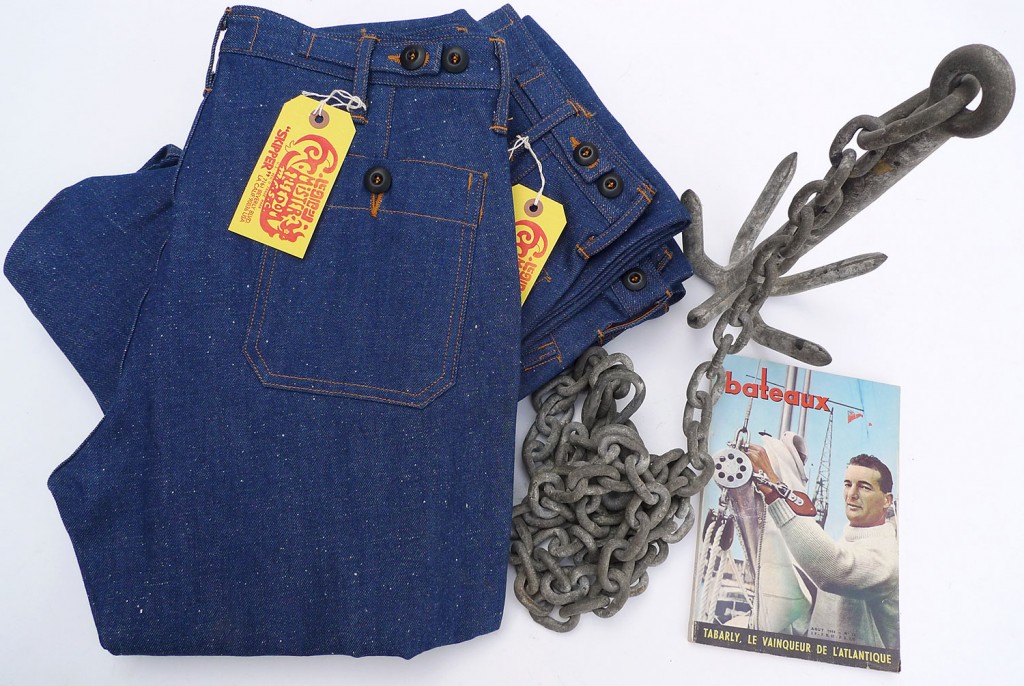
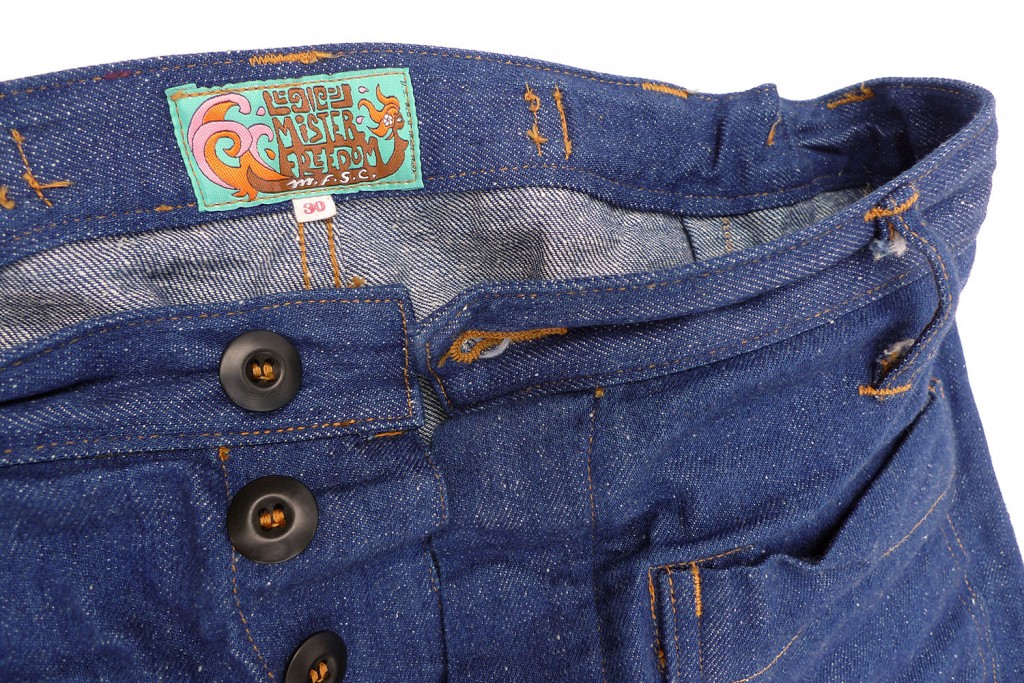
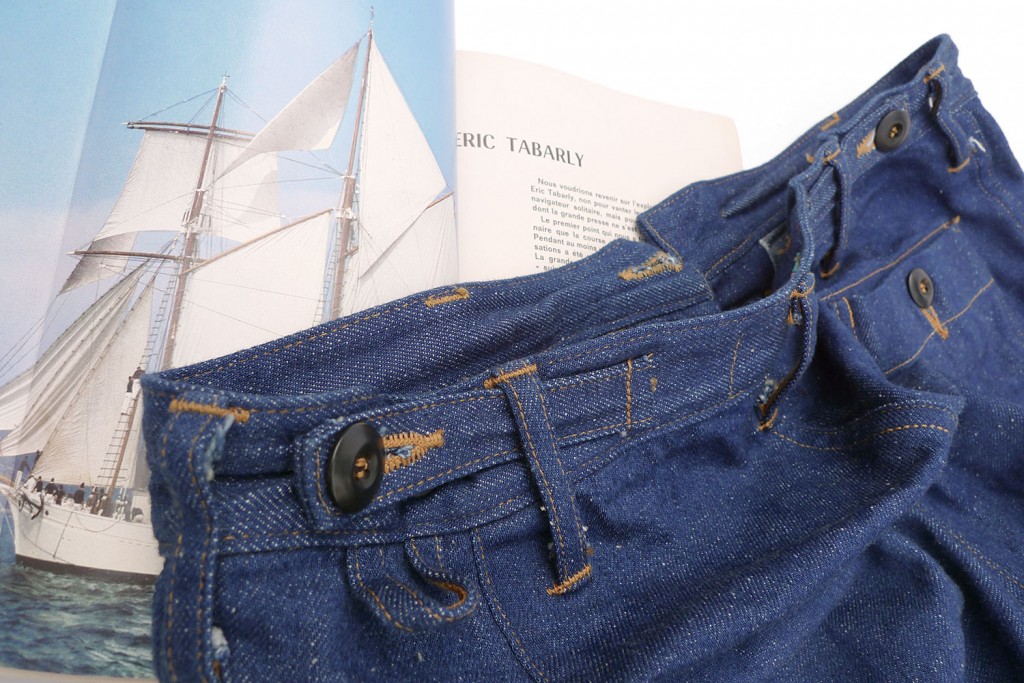
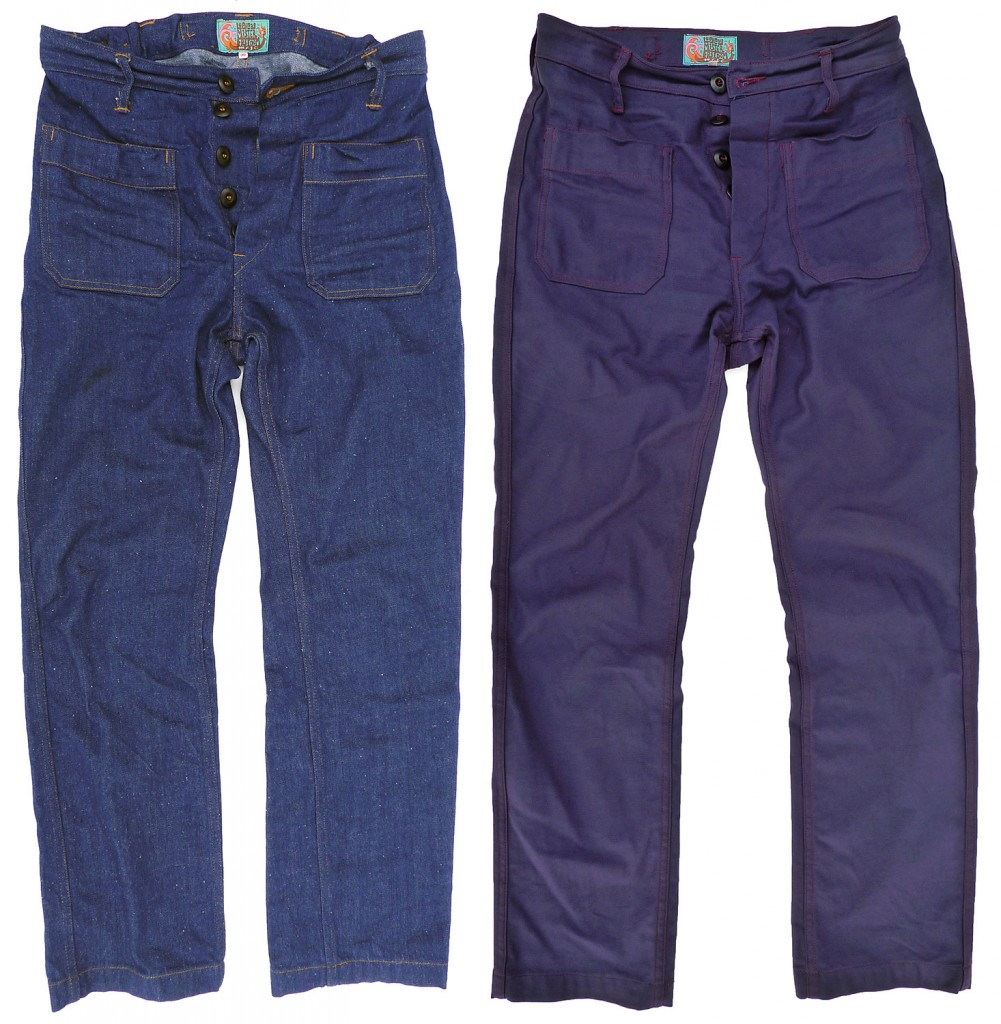
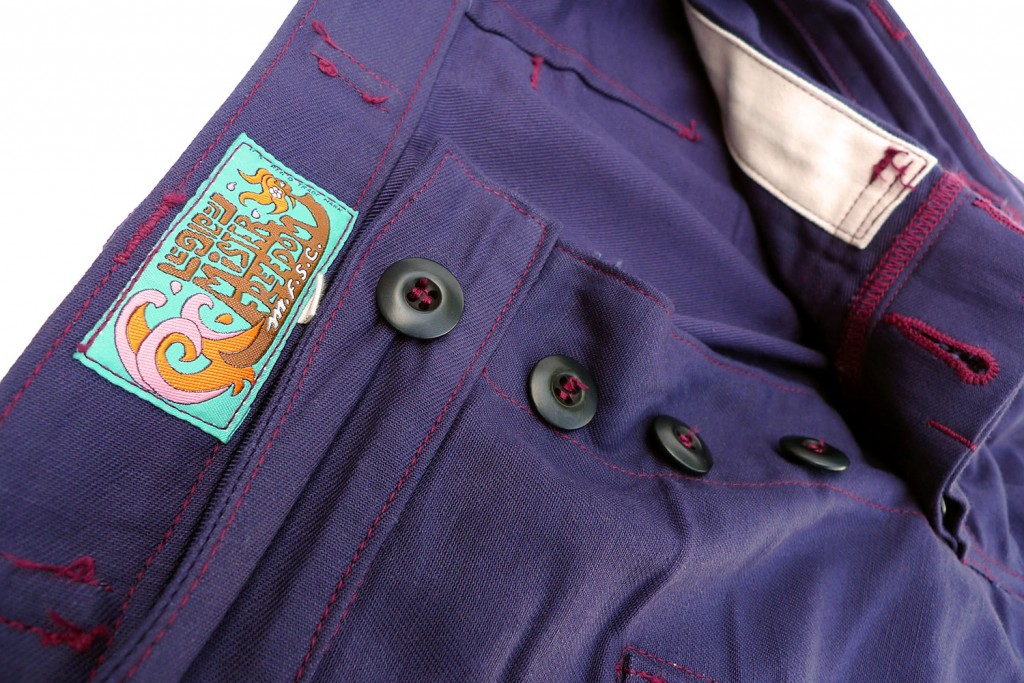
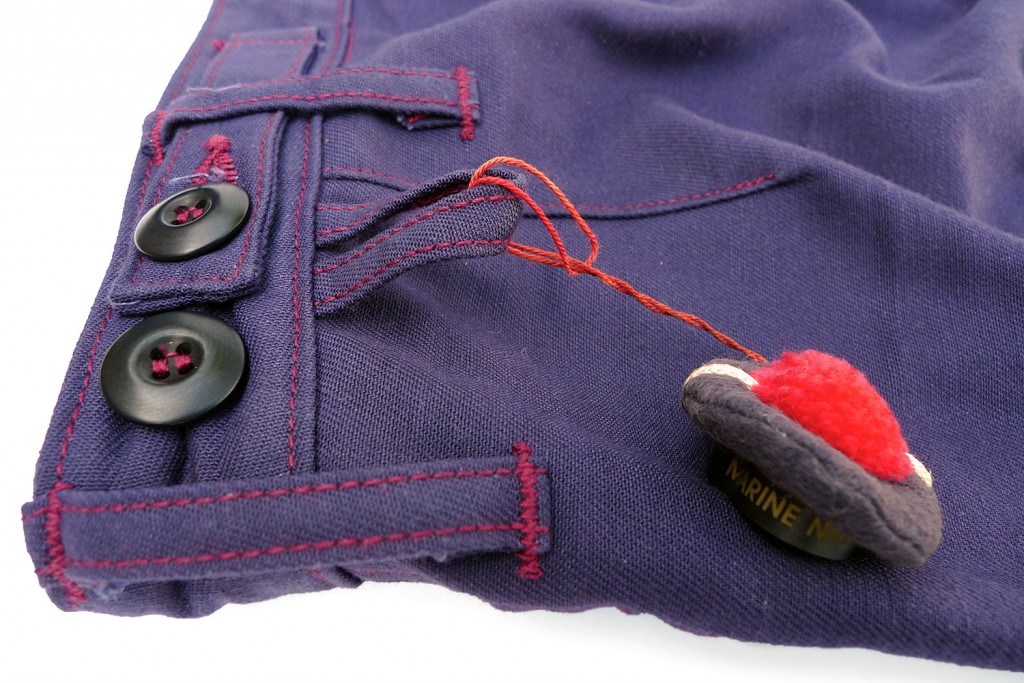
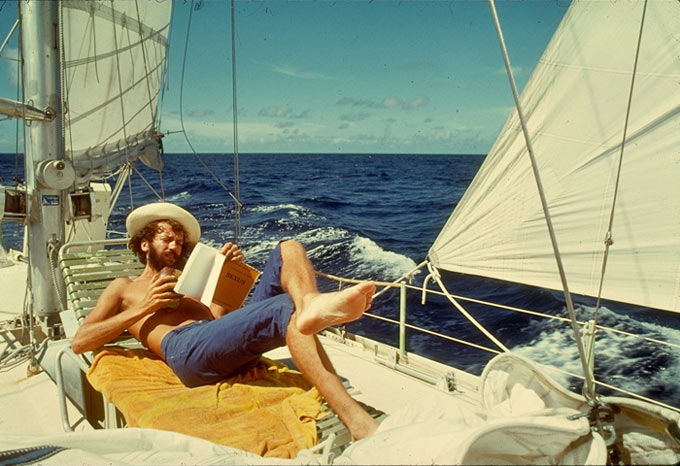 French pop singer Antoine showing us how it’s done, circumnavigating solo circa 1975. Oh yeah. (Courtesy www.antoine.tv)
-
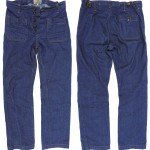
-
Bosco Nep Denim
-
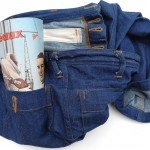
-
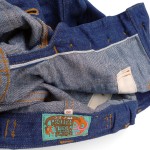
-
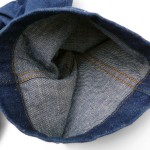
-
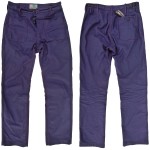
-
Bosco Hydrone Blue
-
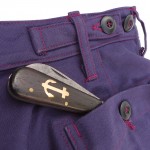
-
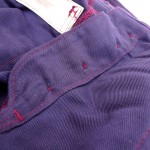
Bosco Pants
Hydrone Blue and Nep Denim
Skipper Spring 2016
In its French maritime acception, the term bosco refers to a seamanship speciality. I don’t exactly recall what those we called bosco did on board… but definitely more than I did. Technically there is only one bosco on board in the Marine Nationale, but I remember the name being applied to a few people, all of them at their busiest during the ship maneuvers. In English, the ‘top’ bosco might translate to boatswain, senior crewman, a ‘buffer’ between sailors and the Captain. Anyways, I’m no Patrick O’Brian, you’re better off referring to a Bluejacket’s manual.
In our case, the term bosco is a stretched-out reference to mighty navigator Eric Tabarly…
With a stint in Indochine in 1954 and a subsequent career as a French Naval Officer, Tabarly won instant fame by showing-up unexpectedly early at the finish line of the 1964 edition of the Single-Handed Trans-Atlantic Race. Aboard his custom built wooden ketch Pen-Duick II, a game-changing revolutionary vessel in the world of yacht racing, he had crossed the Atlantic in 27 days, 3 hours and 56 minutes. The victory of this 32 year-old unknown sailor astounded a previously mildly-interested French audience, giving Tabarly hero status and providing the French with a new ‘favorite’ national sport overnight.
For those interested to know about this larger than life character, I recommend this documentary.
-
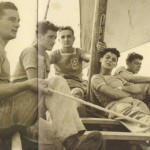
-
Tabarly and Marine Nationale mates, CFM Hourtin (1953)
-
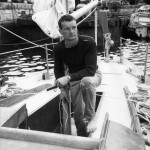
-
Tabarly Pen Duik 2 Plymouth, 1964 (courtesy AFP)
-
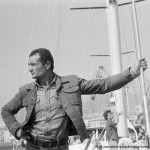
-
Tabarly in Toulon, 1976 © Jean-Michel Barrault/Sygma/Corbis
-
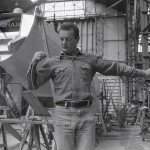
-
Tabarly Hydrofoil, 1979 ©Jean Guichard/Corbis
-
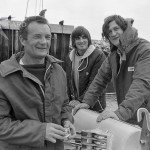
-
Eric Tabarly & Olivier De Kersauzon,1979 ©Jean Guichard/Corbis
If the taciturn navigator probably had men’s fashion as the last of his concerns or interests, in par with his notorious reluctance to grant interviews due to incompetent questioning, several old photos show him denimed-out, often sporting patch-pocket Seafarer-style denim work pants.
This type of dungarees had been favored by deck hands for generations, apparently since an Italian fella by the name of Tony ‘Seagoing’ Anzalone came up with the famous bell-bottom design one fine day of 1896… Tony started supplying his trademark denim bells to local workers and sailors frequenting his custom tailor shop by the Brooklyn Navy Yard.
The legend of Seafarers® was born.
The style was to become a 1970’s fashion staple, with mass-produced stocks of bell-shape legged jeans with patch pockets eventually filling-up Army-Navy surplus stores around the world.
Well a-played a-Tony.
Our Bosco pants are inspired by several naval trousers, and feature a combination of details revisited from vintage naval dungarees and military-issued whites (70’s German Navy, I believe).
If we opted-out of the de rigueur traditional navy flared bottoms for our Bosco, and stayed away from the skin-tight top block Tom Jones fit, there is nothing wrong in my book with 70’s menswear fashion… We all know there is way more to that decade than tie-dyed hippies, double-knit acrylic jersey jump suits, and the invention of roller-disco.
In classic 1970’s men’s fashion, I have spotted at times more elegance, more manliness, more badassness, more individuality, more timelessness, more humor with less self-conscienceless than most of today’s street styles hope to be remembered for.
Just flip through vintage 60’s-70’s Playboy® or Esquire mags. Don’t light up that Lark but check out those ads… If anything, you’ll get a good laugh.
-
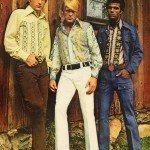
-
Yes, that is Nick Nolte at 12:00 (H.I.S. 1972)
-
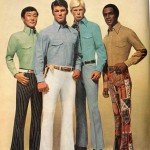
-
No, this is not Benetton (H.I.S. 1970’s)
-
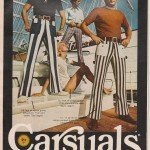
-
Here’s some nautical fashion for ya (Esquire 1972)
As always, our suggestion is not to take everything literally and look today like a dated caricature, although that’s a subjective notion. We just believe it’s not a bad idea to mix it all up, keeping it fun. Whatever your vintage era of predilection, moderation in the mullet-of-the-day seems to always work better a posteriori.
The bosco is offered in two fabric options, introduced recently via our smashing Gabier jacket. No flamer this time, just Hydrone Blue and Nep denim.
a) “Hydrone Blue”: Hydrones are a type of vat-dye colorants, a ‘competitor’ to indigo in the usual workwear fabric family. Hydrone blues are known for their colorfastness and are very commun in European workwear. “Bleus de chauffe” or “Bleus de Travail” (work blues) are typically associated with blue-collar workers in France, and largely still in use today, although polycotton has taken over 100% cotton. Faded and patched-up specimen have been in high demand by fashionistas for some years.
For our version of this Hydrone Blue, we have sent a vintage French jacket to our expert friends at Toyo Enterprises. They picked apart and studied the fabric under microscopes and milled a handsome 9 oz. selvedge blue twill with ‘reddish eggplant’ hues which should reward the wearer with a nice patina overtime.
The keen eye will notice that we are using the reverse side as the face of the fabric, leaving the more ‘stripey’ twill side on the inside. This gives the Hydrone Blue bosco pants more of a ‘moleskine’ than a twill appearance, reminiscent of 1960’s USN N-4(?) popeline deck jackets and work trousers.
b) “Nep Denim”: A denim in the style of our “Malibu” denim, a lighter hue indigo-dyed selvedge 12 oz. “neppy” denim, milled in Japan.
-
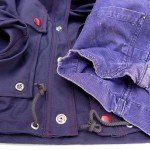
-
Hydrone Gabier and vintage hydrone blue work jacket.
-
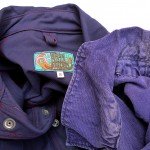
-
MF® Hydrone Gabier and vintage hydrone blue work jacket.
-
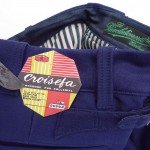
-
Vintage Hydrone fabric paper label
-
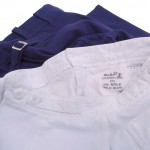
-
Vintage German Navy whites
The Bosco pants are designed in California by Mister Freedom® and manufactured in Japan in collaboration with Sugar Cane Co.
SPECS:
An mfsc original, inspired by classic naval trousers, blues and whites, and 1970’s seafarer-type jeans.
FABRIC OPTIONS:
a) Hydrone Blue: Hydrone blue vat-dyed twill, 9 oz., selvedge, milled in Japan.
b) Nep Denim: a lighter hue indigo-dyed selvedge 12 oz. “neppy” denim, milled in Japan.
DETAILS:
* Patch pockets Seafarer-style
* Single rear pocket.
* Inside reinforcement patches for pocket opening strength.
* Thin belt loops.
* Rear adjustment tabs, button cinch.
* Full flat-felled seams construction, chainstitch.
* Button fly, corrozo wood buttons.
* Selvedge ID displayed in button fly placket.
* Contrast 100% cotton stitching.
* Designed in USA.
* Made in Japan.
SIZING/FIT:
The Mister Freedom® Bosco Pants come raw/unwashed. We recommend the usual initial 30mn cold soak/occasional hand agitation/spin dry/hang dry process.
Both fabrics are supposed to shrink to similar measurements, but the Nep Denim version ended-up roomier than its Hydrone Blue companion.
We recommend sizing down on both, as the waist is pretty generous. I sized down to a Waist 30, from my usual Waist 32 in mfsc trousers and jeans. Please note that we have tested rinsing the Nep Denim in hot water + tumble dry, without much noticeable extra shrinkage.
Please refer to sizing chart for approximate raw/soaked measurements to see what works for you. Soaked = 30mn cold soak, spin dry and line dry.
-
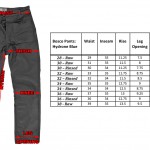
-
Hydrone Blue Sizing
-
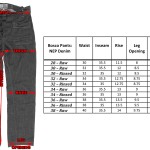
-
Nep Denim Sizing
-

-
Bosco Hydrone Waist 30, Gabier Flamer Size 38
-

-
Everybody was KFF
CARE:
Subsequent cleaning should be done with the trousers flipped inside/out (to avoid marbling), gentle cycle, cold water, with minimal environmentally friendly detergent and line dry. Natural fading of both Nep Denim and Hydrone Blue fabrics is to be expected with normal repeat wash/wear cycles.
Available Raw/unwashed
Sizes (W stands for Waist)
W 28
W 29
W 30
W 31
W 32
W 33
W 34
W 36
W 38
Retail $299.95
Available from www.misterfreedom.com, and our Los Angeles brick & mortar store.
Email sales@misterfreedom.com or call 323-653-2014 with any questions unanswered above.
Thank you for your support,
Christophe Loiron
Mister Freedom® 2016
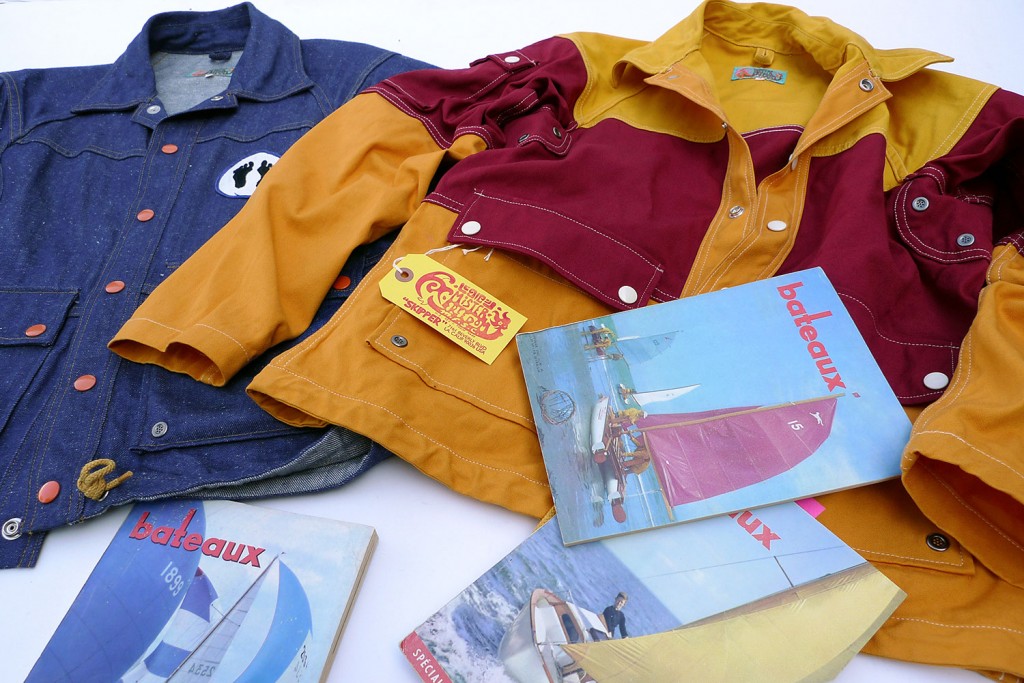
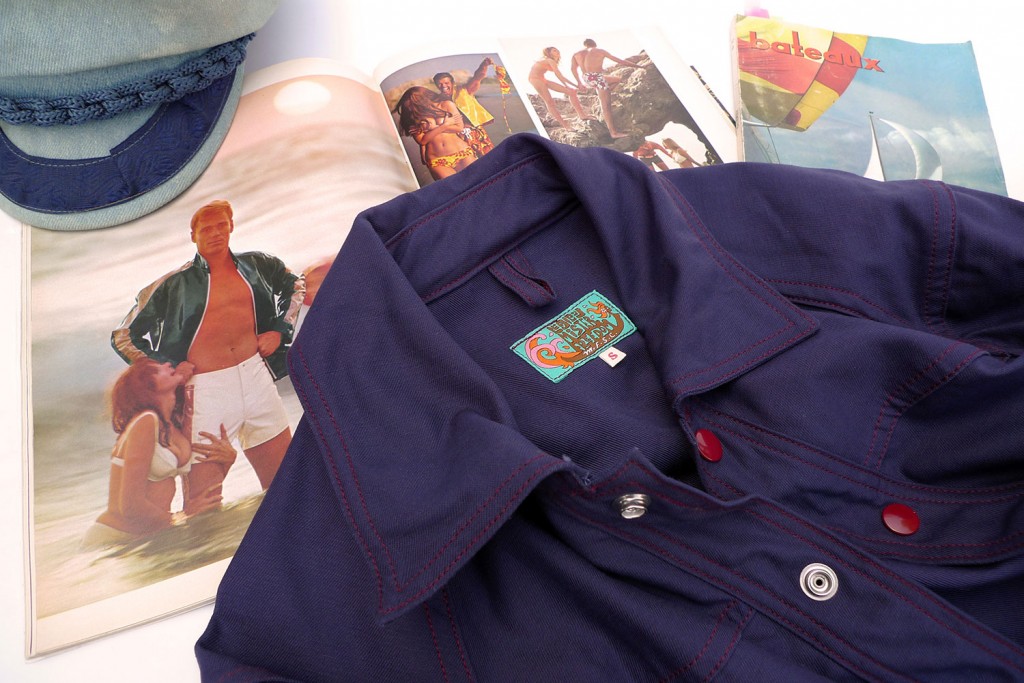
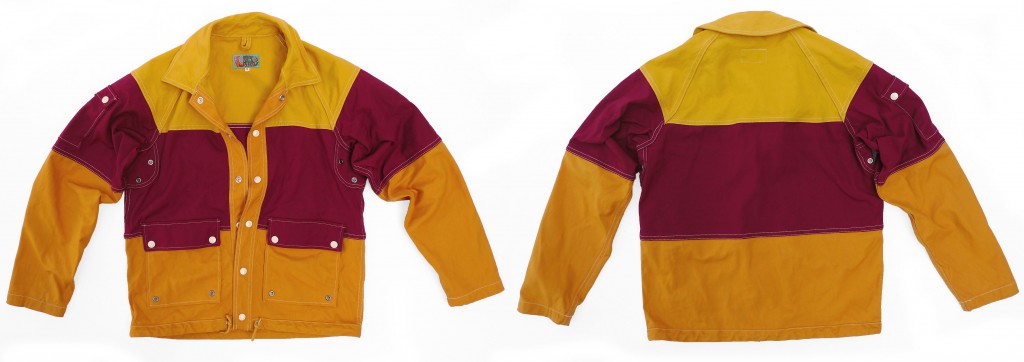 Mister Freedom® “Flamer” Gabier Jacket 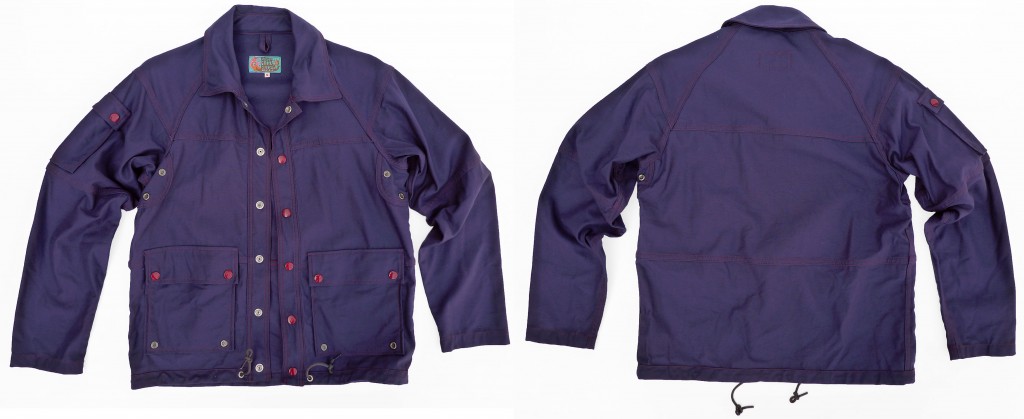 Mister Freedom® “Hydrone Blue” Gabier Jacket 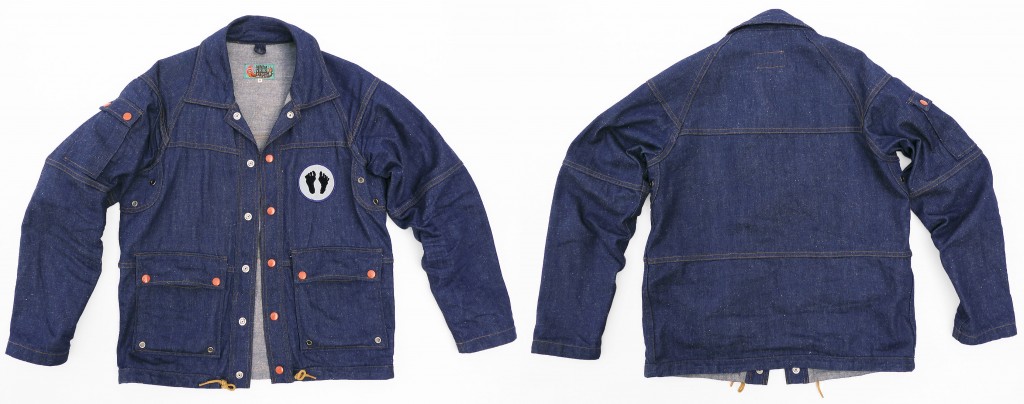 Mister Freedom® “Nep Denim” Gabier Jacket (perso CL, customized with vintage patch) 
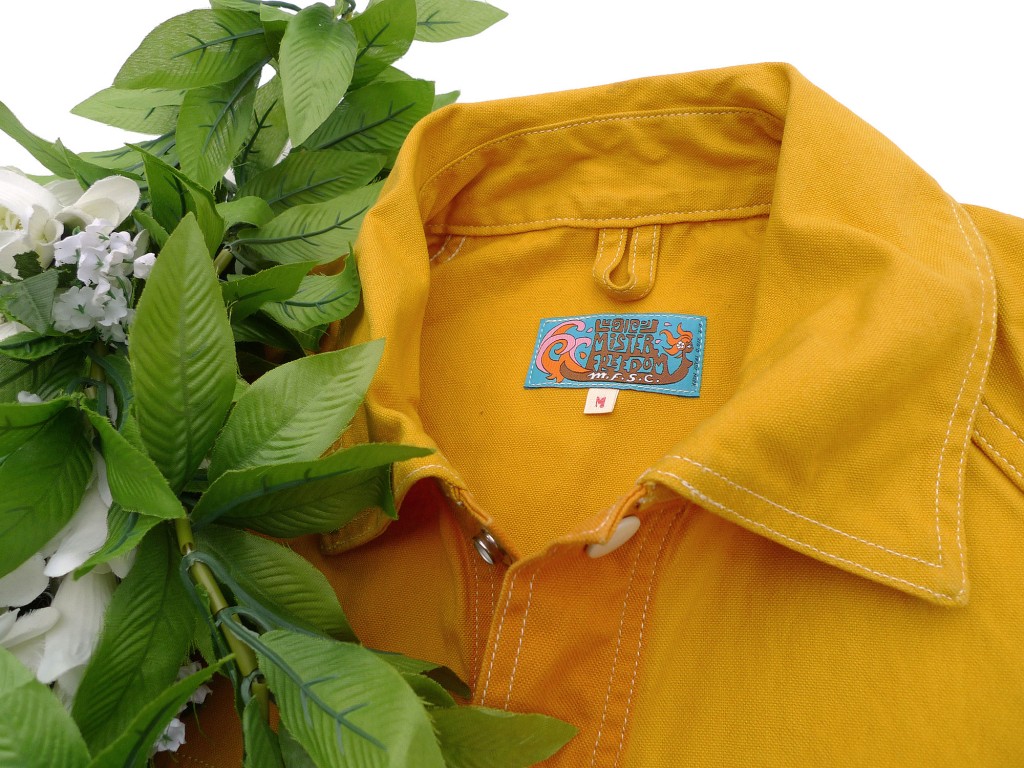
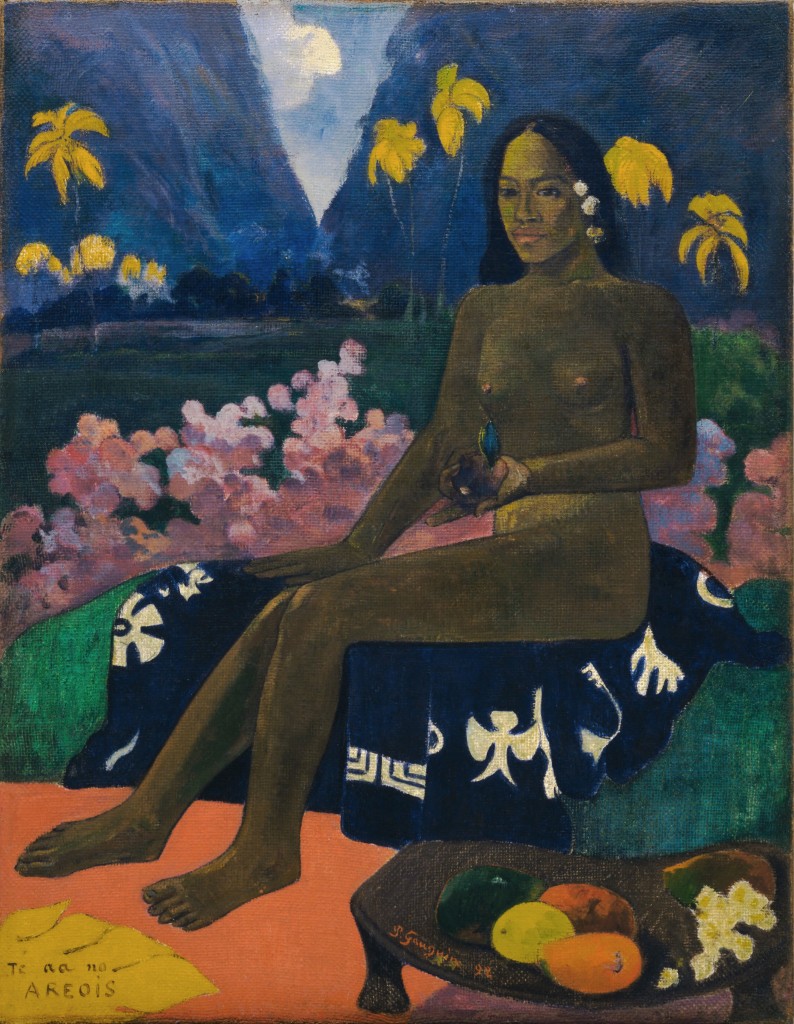 Paul Gauguin “Te aa no areois”, 1892 (Courtesy NY Museum of Modern Art)
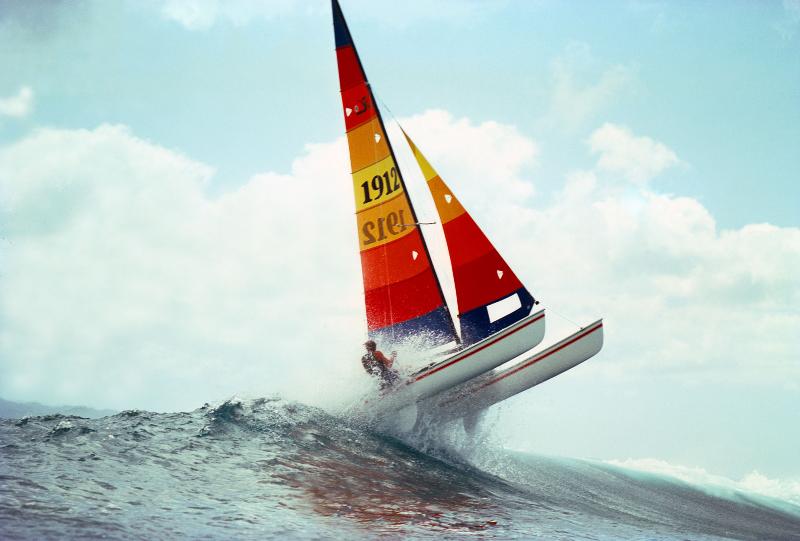 Hobie Cat 1978 “Cat Fever” (Photo courtesy Steve Wilkins) 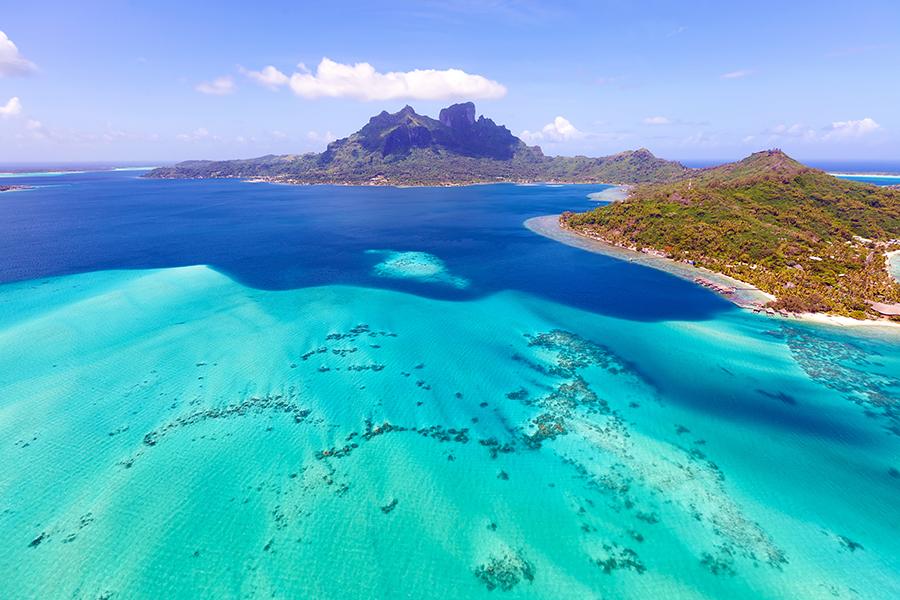 ‘ia ora na! 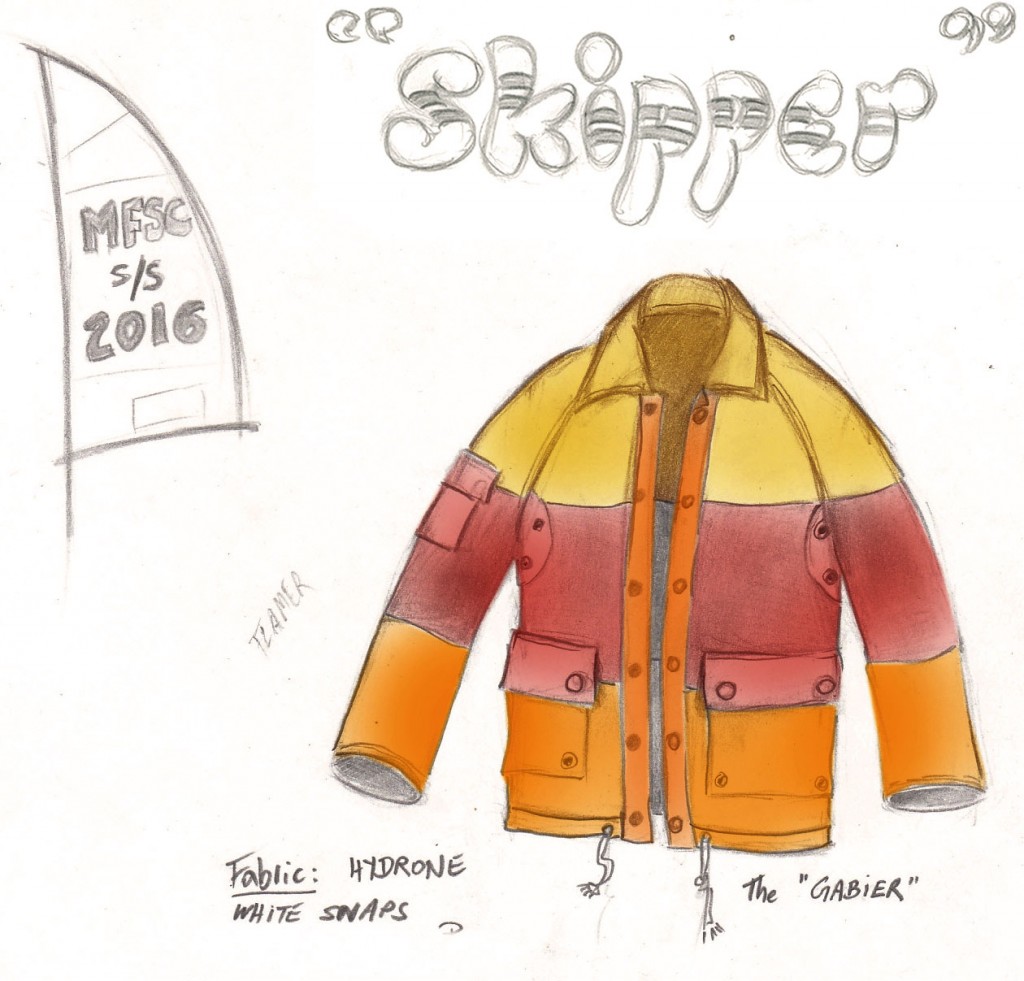
The Gabier Jacket
Flamer, Hydrone Blue, Nep Denim
“SKIPPER” mfsc Spring 2016
“I am a citizen of the most beautiful nation on earth, a nation whose laws are harsh yet simple, a nation that never cheats, which is immense and without borders, where life is lived in the present. In this limitless nation, this nation of wind, light, and peace, there is no other ruler besides the sea.”
Bernard Moitessier, Indochina-born French navigator, minimalist, ecologist, free-spirit sea mystic who in 1968 showed the World how to win a race by losing it, opting for La Longue Route in this Voyage for Mad Men…
Well, I don’t know about you, but sometimes the idea of atoll-hoping in Polynesia sounds much better than whatever I happen to have lined up for the day.
So tell the landlord we’ll be sailing our merry way in turquoise waters through coral reefs and sandy motus for Spring 2016. Looking forward to war fever contained. The Skipper escapes to tranquil shores this season.
The catalyst of the Mister Freedom® SS2016 Skipper collection was mostly the need to take a break from boobytrapped jungles and shrapnel, avoid depressing World news and discouraging reads in general. We also felt like venturing away from ‘heritage’ Dust Bowl salt & pepper grey for a while.
So, as a refreshing breather, we indulged in several fascinating seafaring yarns, from various inspiring eras and parts of the World. And as far as uplifting bedside reading is concerned, tales of adventurous sea escapades and whiffs of tiaré from Tetiaroa sure beat the morning scent of napalm.
This pleasant research took us on a circumnavigating mental journey in the wake of an international cast of salty sea wolves, nautical legends, brass-b*lled adventurers and even Hollywood cast-aways.
Story-wise, our Skipper collection found substance in several real-life accounts from various wanderers of the World, such as Captain Joshua Slocum (1898, first man to sail solo around the World after a three-year voyage), James Wharram (famed boat-designer and Lapita voyage initiator), Eric Tabarly (responsible for providing the French with a new national sport in 1964)…
Back home in California, besides frequent trips to the beach and around the marina, several eclectic writings and deeds from the likes of Louis-Antoine De Bougainville, Jack London, Robert Dean Frisbie, cast-away Tom Neale … also helped to get in the mood.
The documentary Deep Water was a moving insight into the world of yacht racing and an enjoyable watch.
-
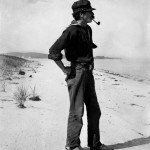
-
Thomas Fleming Day (1861-1927) Courtesy Mystic Seaport Museum
-
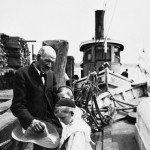
-
Captain Joshua Slocum (circa 1906)
-

-
James Wharram (1955) Courtesy James Wharram Designs
-

-
‘Wanderer’ Sterling Hayden (1950’s)
-
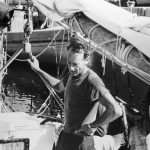
-
Bernard Moitessier (1968)
-
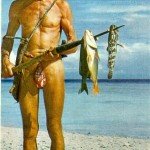
-
Fashion on Suwarrow by Tom Neale
How does all that translate into clothing? Well, although we’ve been into vintage rags for some time now we are not ‘period snobs’, so style influences for this collection are a bit all over the place this season. Stylistic references will basically be spanning from the earliest hominoid sea voyages known to anthropologists (some 130,000 years ago, and maybe not 12,000 as previously commonly speculated), all the way to the days of Eric Tabarly…
There is, admittedly, more of a noticeable 1960’s to late 1970’s vibe to our 2016 Spring concept, rather than, say, a Stone Age caveman wardrobe emphasis. And, OMG, we even threw in a dash of early 80’s!
Mister Freedom®, more than ever catering to the International He-Man of Action, mixing bold colors and patterns.
On a quick serious note, and after some ten years designing wares for the shmata racket under the Mister Freedom® name, we’re actually very grateful to be addressing a mature audience with discerning tastes today, catering to thinking adults rather than having to comply with passing trends and fit fashionable molds. Cheers Gents, much obliged for the support and wit.
So anyways, slap on that Tom Selleck ‘stache and let your Burt Reynolds chops grow, look-up men’s fashion style spreads on old Playboy® zines, turn the volume up on the Motogodille, consider getting lei’d, hop on a Hobie 16, … or just go sit on the beach and watch sails go by for a while.
Sea air does wonders, enjoy it before my Homo Sapiens Sapiens peers mess it all up.
Now, our jacket.
The French moniker gabier is an old maritime term referring to a boatsman specialized in mast rigging and sails. But the MF® Gabier Jacket is by no mean an attempt at a sea-worthy garment by 2016 nautical pro-gear standards. It merely carries a bit of salty air nostalgia.
As a kid living ocean-side in Africa in the early 80’s (Djibouti), I remember bright-colored catamaran sails taking over the horizon at some point. I also remember learning how to maneuver one of those old-school windsurfing boards the size of a large schooner, with giant triangular colorful sails…
The original idea for our Gabier Jacket came from those wonderful vintage sails, with colors spliced together for easy ID at sea, and probably to entertain seagulls. The term “Flamer” is a nod to a specific color combo sail pattern introduced by boat-builder Hobie Cat® in 1975.
Popularized in the 1960’s by the likes of Verner Panton, crazy color juxtapositions had impacted everything from curtains to popular wearables by the late 1970’s. In 1976, although a good year for red white and blue graphics in the USA, an upcoming little venture even opted for a rainbow-colored fruit as their logo.
-
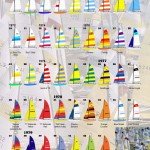
-
Sail patterns, courtesy of Hobie Cat
-

-
Where are they now?
-
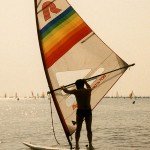
-
1980’s
-

-
Not exactly part of the Skipper, I just lost a bet
On a side note, I actually clicked the “BUY IT NOW” button on a boat early last year, a vintage pristine 1976 “Flamer” Hobie 16 (BIN auctioned for $300.00!). I owned it for an evening, until I realized in the morning that I had to hand-deliver the cash, bring the proper trailer to haul it out, and pick up the prize from a remote location on the East Coast… Yes, I too have joined the numb nuts of the Can’t Properly Read eBay Listings Before Bidding Club.
Well, that is my big sailing adventure.
Our Gabier Jacket comes in three fabric options.
a) “Flamer”: The fiery option, a combination of three 9.5 oz. 100% cotton canvas, milled and dyed to our specs in Japan.
b) “Hydrone Blue”: Inspired by vintage French workwear, this 9 oz. selvedge 100% cotton twill fabric was milled and dyed in Japan according to a vintage 1960’s specimen from our archives. The specific color is typical of ’bleus de travail’ (work blues) often sported by French workers and fishermen. It differs from traditional indigo and has characteristic attractive fading properties.
c) “Nep Denim”: In the style of our “Malibu” denim, a lighter hue indigo-dyed selvedge 12 oz. “neppy” denim, milled in Japan.
-

-
MF® Hydrone Gabier and vintage hydrone blue work jacket.
-

-
Hydrone Gabier and vintage hydrone blue work jacket.
The Gabier Jacket is designed in California by Mister Freedom® and manufactured in Japan in collaboration with Sugar Cane Co.
DISCLAIMER: Please note that the Nep Denim Gabier Jacket featured on the photos shows a vintage ‘Pied-Noir’ patch. This is a personal addition. The Mister Freedom® Gabier jacket originally comes without any patches, and is left up to you to customize or not.
SPECS:
Inspired by the 1960’s and 1970’s world of sailing.
FABRIC OPTIONS:
a) Flamer, three color canvas combo.
b) Hydrone Blue, solid.
c) Nep Denim, solid.
DETAILS:
* Sail-inspired horizontal spliced panel construction.
* Raglan sleeves.
* Unlined, no open seams, caballo-type chainstitch construction.
* Painted metal snaps.
* Arm pocket featuring an oh-so hi-tech concealed button-hole opening for your iPhone® headphone cable, which you will never use.
* Cinchable waist with pull cord.
* Metal mesh eyelets for underarm ventilation and pocket water drainage.
* Designed in USA.
* Made in Japan.
SIZING/FIT:
We recommend an original cold soak and line dry.
All three fabric options will shrink to approximate similar measurements.
We suggest our usual method for raw cotton garments:
* 30-40mn cold soak with intermittent hand agitation, in minimally-filled washing machine or bath tub.
* Spin dry cycle (if using a machine).
* Hang dry.
* As an optional step, wear the garment briefly when still not fully dry, in order to slightly shape it to your body and set creases. Hang and let fully dry.
As often with mfsc jackets, I am in-between two sizes with the Gabier. I opted for a Size 38 in the Flamer, and for Size 36 for both the Hydrone Blue and Nep Denim. The canvas fabric will not stretch or give so I have to go for a 38 Flamer, but I can pull-off the 36 in the denim and hydrone twill without the underarm being uncomfortable.
What works for you will depend on your own body requirements. Please check the sizing chart or email sales@misterfreedom.com for sizing advices.
-
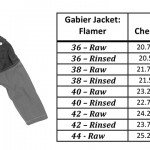
-
Flamer
-
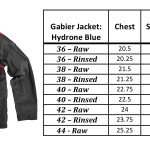
-
Hydrone
-
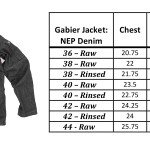
-
Nep Denim
-
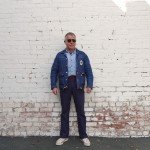
-
Gabier Nep Denim 36
-

-
Gabier Flamer 38
-

-
Another satisfied customer
CARE:
Wash when hygiene dictates and common sense prevails.
We recommend turning the jacket inside out to avoid marbling of the fabric.
Hand washing can be a good option for those concerned with specific wear patterns and high-contrast colors fades. Otherwise, machine wash inside out with cold water, gentle cycle, eco-friendly mild detergent and line dry.
Available RAW/unwashed
SIZES:
Small (36)
Medium (38)
Large (40)
X-Large (42)
XX-Large (44)
Retail $ 449.95
Soon available from www.misterfreedom.com, fine retailers around the World, and our Los Angeles ol’ pile o’ rags.
Email sales@misterfreedom.com or call 323-653-2014 with any questions unanswered above.
Thank you for your support,
Christophe Loiron
Mister Freedom®
©2016
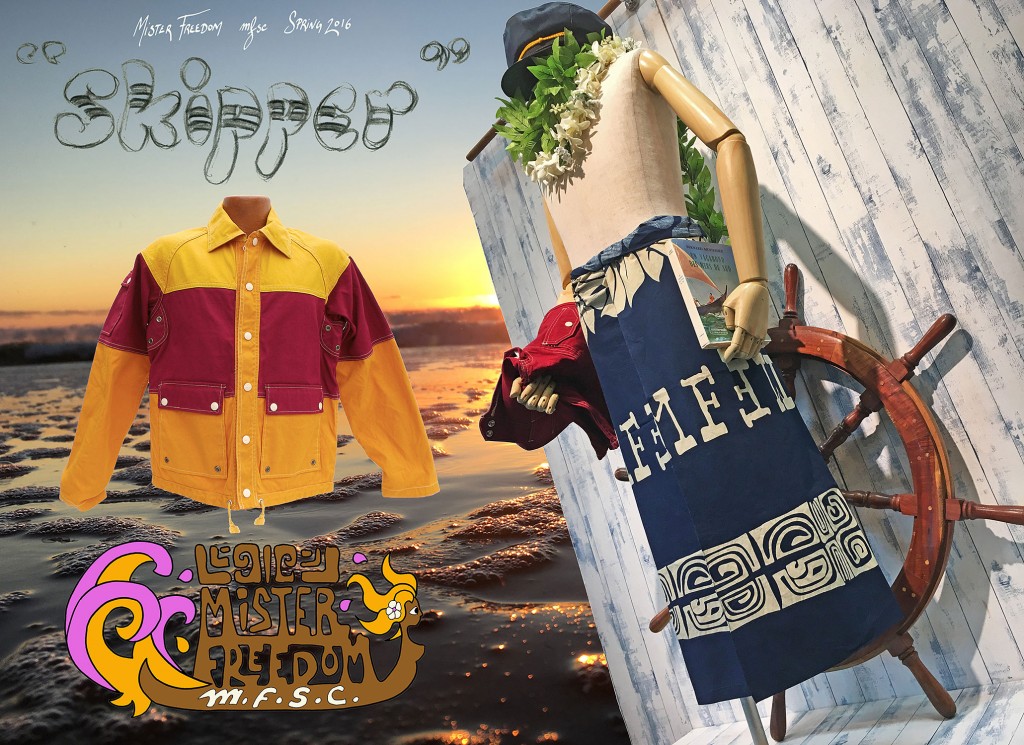

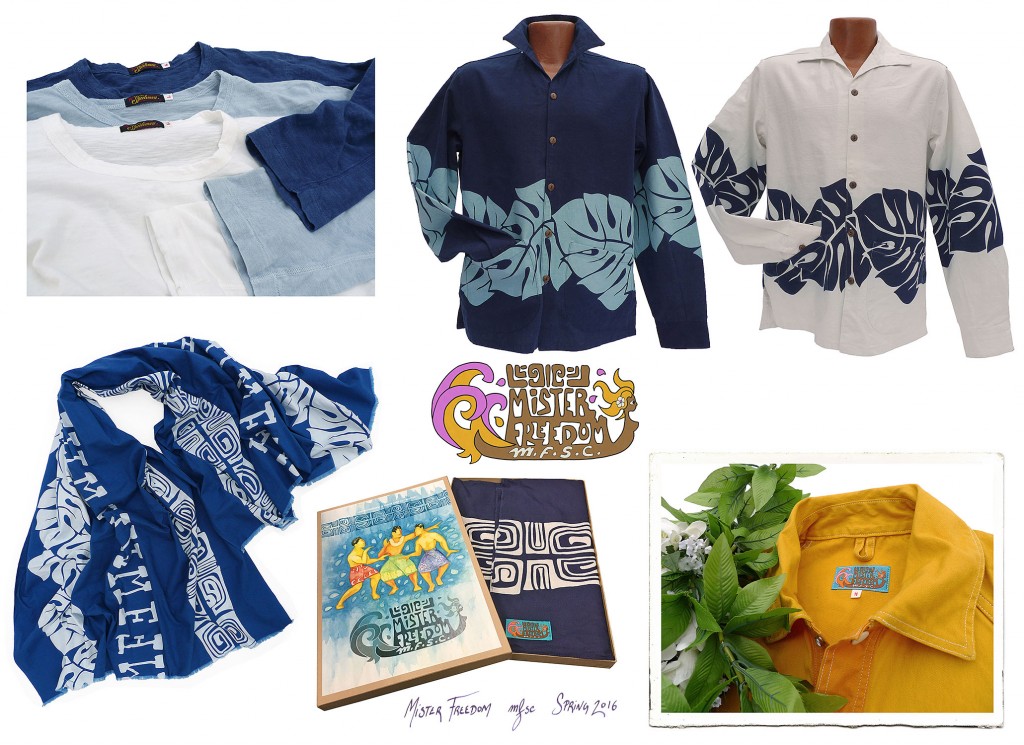
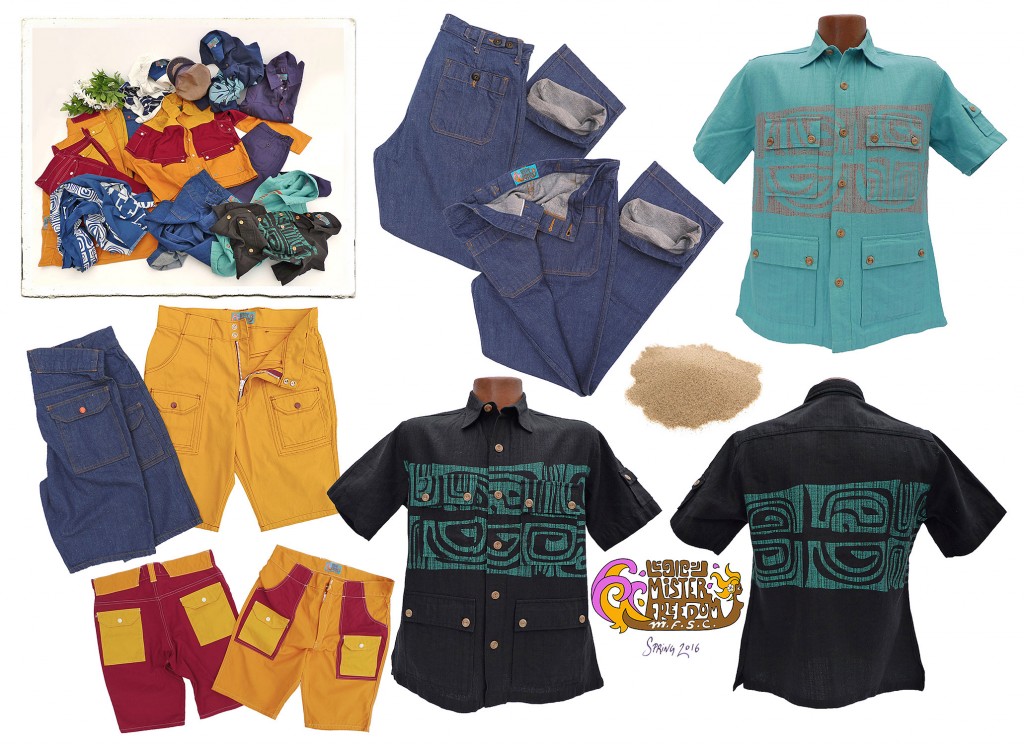
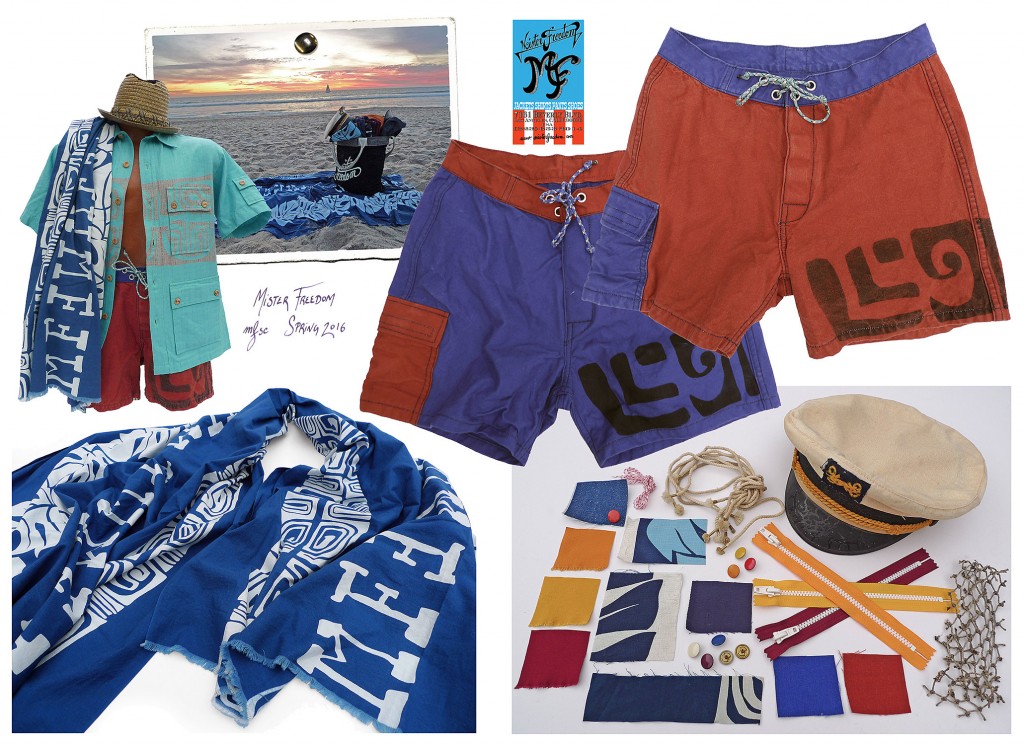
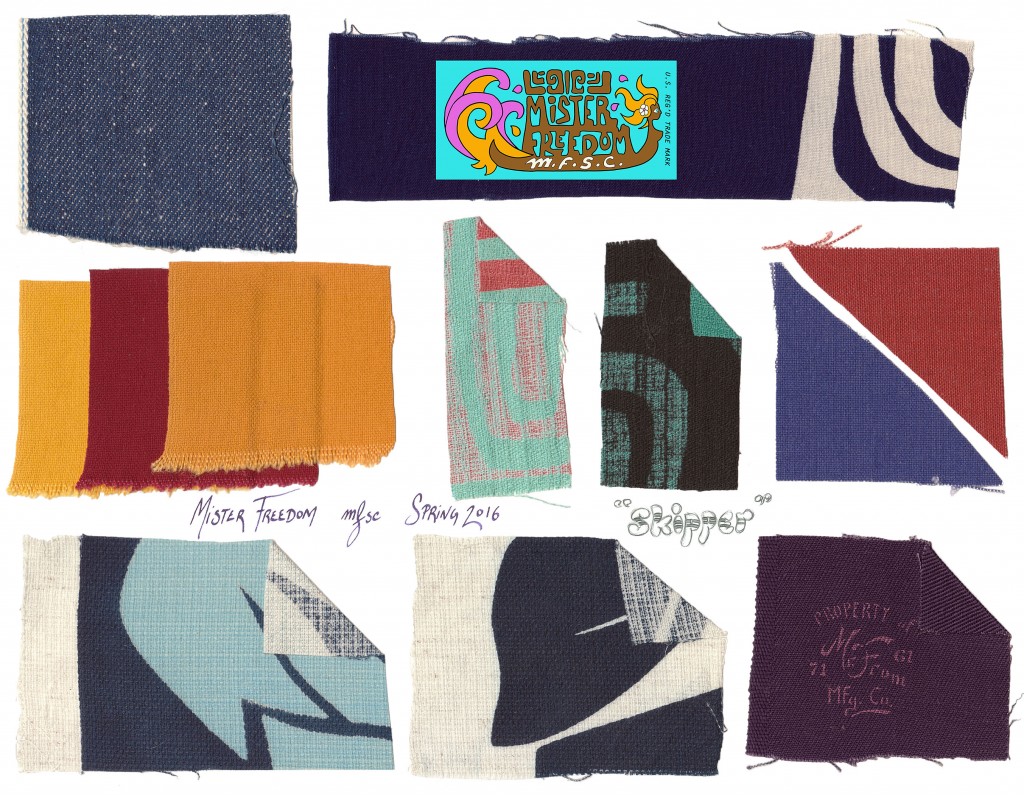
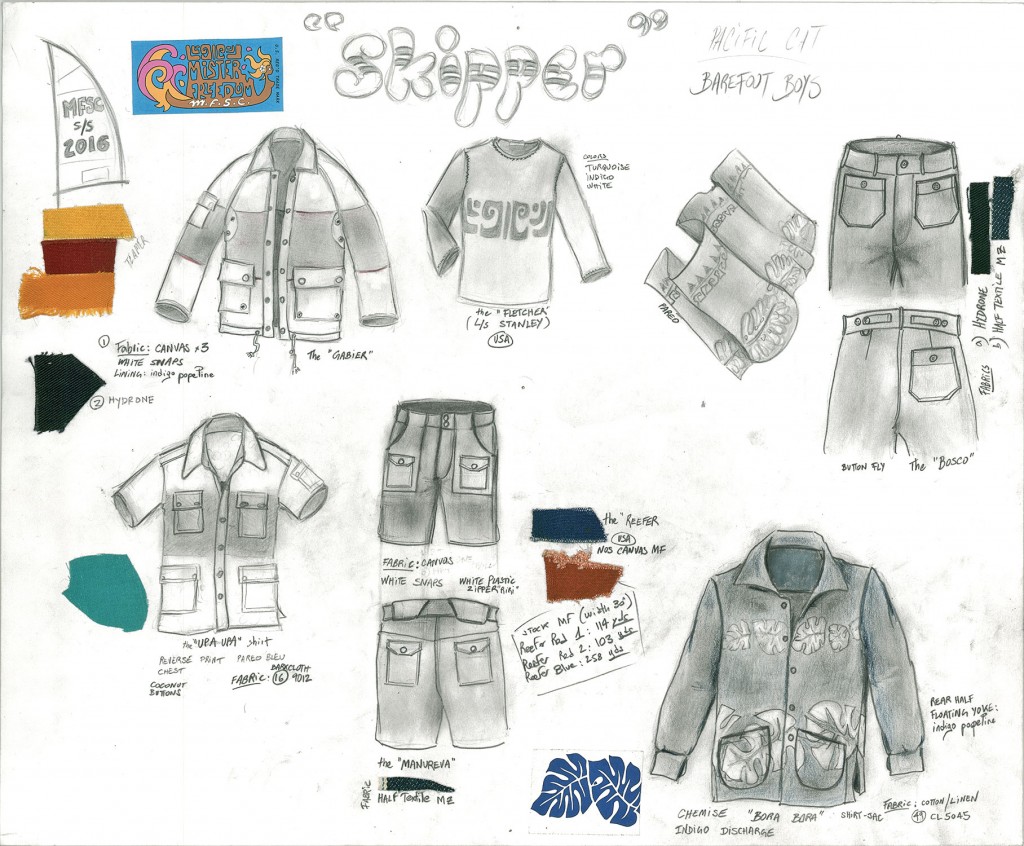 Early SKIPPER doodles Mister Freedom® ©2015
“SKIPPER” Spring 2016
Mister Freedom x Sugar Cane
Just add water.
Available sometime in 2016, from www.misterfreedom.com, fine retailers around the World, and our Los Angeles brick & mortar store.
Thank you for your support.
MF®
 Captain Ahab’s cover, estimated at roughly $35,000,000.00
 My fellow G-Men won’t mind me sharing
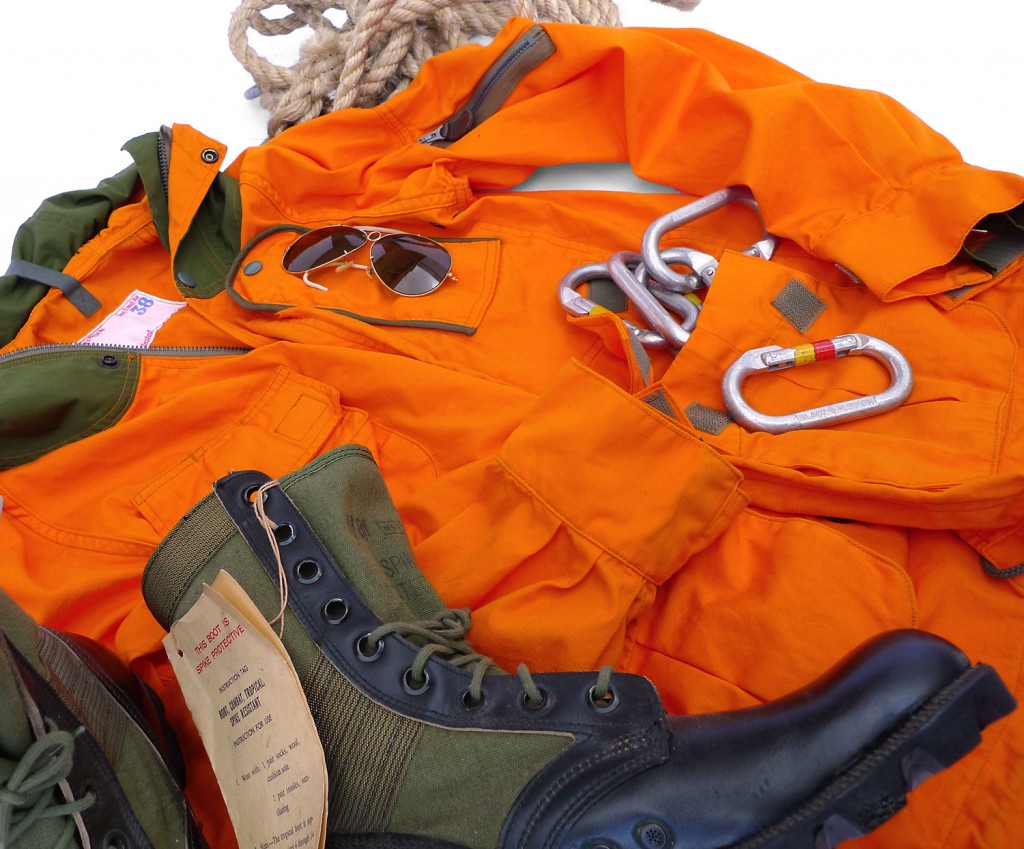 What’s up doc? Green top, orange body.
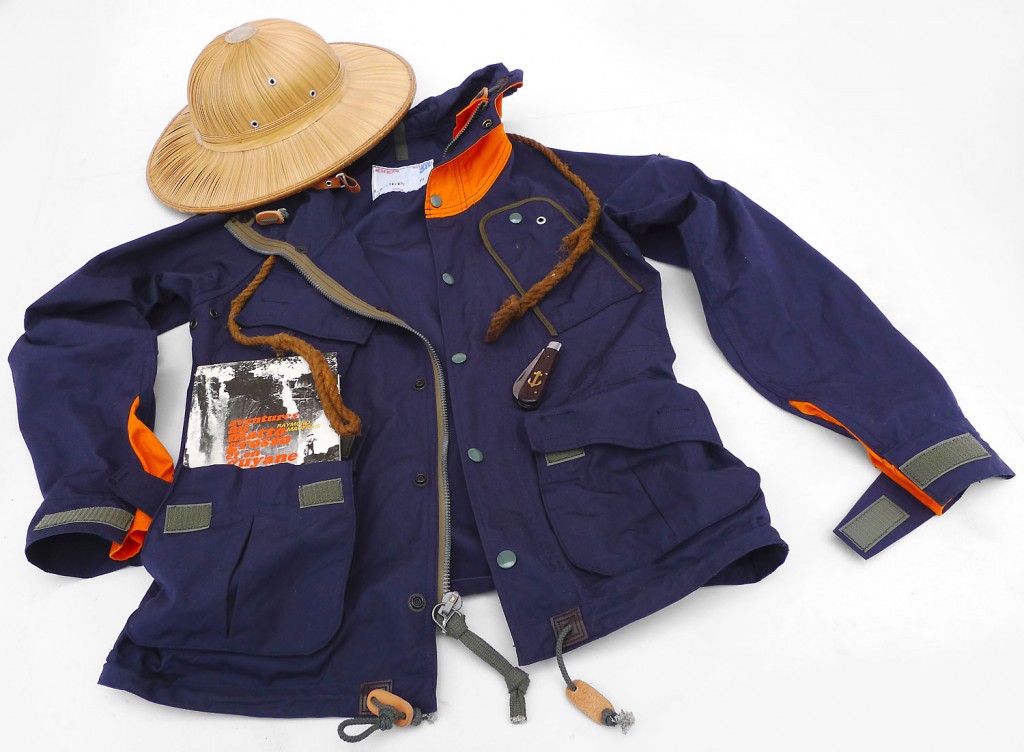 Another hat inspiration SKIPPER Jacket, Weather Cloth & Ripstop
“Sea Hunt” Collection, mfsc Spring 2014
One of these days, when they are made longer than 24 hours, I would love to embark on an attempt at documenting how a selection of time-tested 20th Century military garment designs originally came about…
We take for granted that iconic pieces exist, from the USN Peacoat to “The Hunter” MA-1 to Panama sole Jungle boots to “Taxi Driver” M-65… but gathering info on their drafting-table origins is a full-time job.
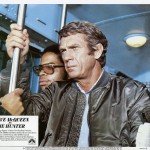 
The design thought and process, along with the names and faces behind these garments, would make a fascinating coffee table book. Before all gets lost to History and assuming none of this is under classified status, I believe someone should undertake this archival task.
I do not know the first thing about writing a book, so I’ll put this on the rear part of the back burner of my broken stove for now.
So, until then, you know it, it’s time for another story! Yeahhhh!
Let’s introduce our 2014 “Skipper”.
This tricked-up zip-up jacket got its nickname from being the top layer of choice of our “Sea Hunt” Team’s salty helmsman, when cruising tropical latitudes. According to the type of mission the Team was on, a color was chosen, orange being mostly reserved for search & rescue. Such missions included the fruitless expeditions to locate 23 year-old adventurer Raymond Maufrais who vanished on January 13, 1950 after entering the thick Guyanese Amazon jungle. In 1964, after 18 self-financed expeditions to Dutch Guiana, his father Edgar Maufrais was still searching for him…
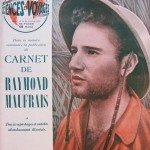 
On a lighter note, the “Skipper” jacket’s design is a pure hybrid and had its origin in a different type of jungle.
I am talking about a remote little town called Natick, some 20 miles from Boston, in the US of A…
It is not commonly known that some of the ‘unsung heroes’ behind many of today’s wearables have had residency in Natick, Massachusetts. Through years of behind-the-scene activities related to the Garment Industry, Natick’s real clothing designers deserve more awards than those distributed on ephemeral fashion week catwalks.
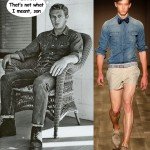 Never gets old… Natick is home of the ‘United States Army Soldier Systems Center‘, sometimes referred to as ‘Natick Army Labs‘.
Given military command’s keenness towards acronyms, the SSC’s denomination and responsibilities have greatly evolved over time, since its QRF (Quartermaster Research Facility) inception days, around 1952.
But that’s where the stuff gets designed. And tested. Like for real.
If you own a piece of vintage Government Issued US military field gear from the 1960’s, chances are its concept came out of some lab around Natick.
Today, for a portion of the roughly 2000 strong personnel working on the premises, the mission is to research and test for the US Army, from textiles to rations to camouflage patterns…
In order to better equip those in the fields according to needs and deployment specifics, uniforms and gear are subject to advanced technological tests and targeted engineering.
Then, we, little designers, get to reap from that R&D in total impunity, since military designs seem to fall under public domain the moment they are released. Stick a woven tab on the rear pocket of denim jeans however, and you get the heavies and a Cease and Desist 😉
Two photos below are courtesy of NSRDEC, Natick Soldier Research Development and Engineering Center. The denim jacket, from MF® archives, is an experimental USN 1970’s coat out of a Natick facility. It didn’t make the mark and that pattern never put in production.
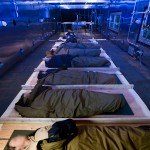 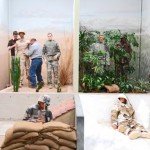 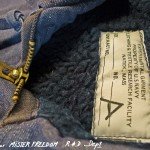
Back on point, our Spring 2014 “Sea Hunt” SKIPPER Jacket owes some of its hybrid specifics to one of the jacket a Natick lab started concocting in 1962.
Namely the MIL-C-43199 (Coat, Man’s, Combat, Tropical) familiar to fans of Apocalypse Now and other jungle-fever types.
-
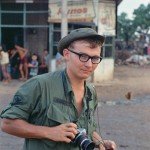
-
Courtesy Charlie Haughey, Vietnam 1960s
-
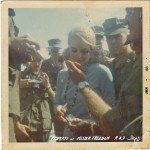
-
Chris Noel, Chu Bai, Vietnam, 1968
-
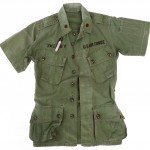
-
Major Sweeney’s Tropical Combat Jacket, 1rst Pattern (MF® Archives)
We borrowed the slanted chest cargo pocket pattern from that tropical jacket, along with its lower cargo pockets. We opted for what is known, to above mentioned jungle-fever types, as the Second Pattern (issued in 1965). That modified pattern featured concealed buttons, as the exposed button models proved to get snagged when in the bush not yet napalmed.
We decided to get rid of the buttons altogether, we’re crazy like that, and replace them by the ultra-hi-tech invention of the day: the “Hook and Loop Fastener” system, invented in 1948, aka Velcro®.
Also, because we know that your summer plans include crossing the Congolese swamp land from West to East á la ‘Babinga-Pongo’, we were thoughtful enough to include ‘drain holes’ in the three cargo pockets (small round stitched eyelets allowing you to keep only the piranhas after a marsh bath.)
Additionally, an arm-wrestling contest with a man-eating swamp crocodile tends to make one work up a sweat, so we have added mesh-screen type eyelets to the underarms.
You’re welcome.
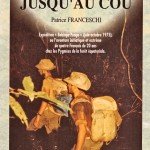 A Congolese swimming pool, 1975 Again borrowed from the US QM Depot are the heavy “Crown” zippers, often featured on field gear in the 1960’s (M-65 jackets for instance.)
Another military reference is the left chest snap pocket, originally the thigh pocket of an orange USAF coverall that held the knife that would cut tangled paracord. The arm ‘cigarette’ pocket is also borrowed from vintage flight gear, and will now hold your iPod, just because smoking is bad.
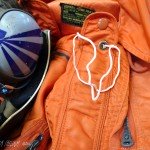 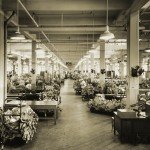
Our hybrid “Skipper” jacket also features some non-mil flagrant influences. It freely borrows from vintage late 1960’s-70’s Sierra Designs® 60/40 mountain parka type detailing, such as snap wind-flaps, two-tone hood, leather pull toggles, gusseted wrist cuffs…
And now the “Fine, fine already, but does it come in black?” chapter:
The fabric options consist of two colors of tightly woven 100% cotton 6 Oz. weather cloth, navy blue and olive green.
A third option, an entirely different textile, is an orange 100% cotton 4.75 Oz. RIPSTOP fabric.
Urban legend has it that the six pockets of the orange ripstop “Skipper” jacket where all needed to holster the many batteries that made it so blindingly bright.
For pairing suggestions, the photos bellow display a full range of multiple and fashionable outfit options. Immediate attention on your bicycle ride to work guaranteed.
MF®, always pushing the boundaries of Trend Forecasting.
-
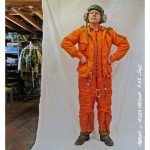
-
Recommended Spring 2014 Look #1
-
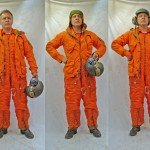
-
Recommended Spring 2014 Look #2, 3,and 4
-

-
Royal Canadian Air Force hipsters
-

-
Still a bit shy
-

-
The roots of it all
-
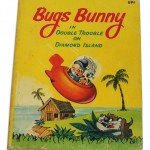
-
Classified MF® R&D Dept documents
Now, after rendering unto Caesar that which is Caesar’s, ie. duly crediting the US Army + George Marks & Bob Swanson of Sierra Design®, let me shamelessly state the following…
The Spring 2014 “Sea Hunt” Skipper Jacket was designed in California by Mister Freedom® and manufactured in Japan as a collaboration with Sugar Cane Co.
SPECS:
FABRICS
a) Navy Weather Cloth: 100% cotton 6 Oz. tightly woven windbreaker popeline, milled in Japan.
b) Jungle Green Weather Cloth: 100% cotton 6 Oz. tightly woven windbreaker popeline, milled in Japan.
c) Orange Ripstop: 100% cotton 4.75 Oz. ripstop fabric, milled in Japan.
According to how you decide to roll your hoodie (= which color will be facing) when secured with the adjustable cinch-strap, the jacket will look two-tone or single tone.
The Navy option has orange accents, the Jungle green option has navy accents, the Orange option has Jungle green accents. And no, the Skipper doesn’t come in green with orange accents, nor in black.
DETAILS:
* An original mfsc pattern, hybrid of 50’s-60’s US military gear and 1970’s mountain parka outdoor-type jackets.
* Un-lined, with flat-felled inside seams, no overlock or exposed seams.
* Heavy mil-spec 1960’s type “Crown” zipper.
* Windflap with DOT-type mil-specs snaps.
* Five pockets:
– Three ‘Vietnam’ combat jacket style Velcro® flap pockets with drain holes and one pen pocket.
– One iPhone chest snap pocket.
– One forearm iPod zipper pocket.
– One concealed chest pocket.
* Gusseted wrist cuffs, two-tone.
* Leather drawstring toggles and cinch eyelets.
* Underarm metal mesh-type eyelets.
* Rollable two-tone hood
* Drawcord hood and bottom, for wind protection.
* Tonal 100% cotton stitching.
* Made in Japan.
WASHING/SIZING:
The Skipper is cut fairly trim but is wearable as a layer according to your build.
I wear a size 38 (medium) Skipper, my usual size in mfsc, with enough room for a light shirt and denim jacket/sweater underneath if needed.
All three fabric options come unwashed, as usual, and will shrink to approximate similar measurements (although our carrot Ripstop fella is slightly longer.)
We recommend an original cold soak, spin dry cycle and line dry.
When cleaning is needed, gentle washing cycle in cold water with minimal detergent will do the trick. Because of the heavy mil-spec type zipper + other metal parts and the relatively thin fabric , care should be taken not to subject the jacket to harsh machine washing.
When in doubt, professional cleaning is always a good option, for those with an environmentally-friendly cleaner in the neighborhood.
Please refer to cold soak/line dry measurements chart (note that, although not recommended, hot water and heat dryer use will result in further shrinkage and probable damage to the leather parts.)
Also note that due to the raglan sleeve pattern, the sleeve measurements were taken from pit-to-cuff (not shoulder-to-cuff.)
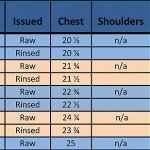 Orange Ripstop 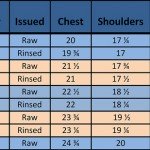 Weather Cloth Available RAW/unwashed.
SIZES:
36 (Small)
38 (Medium)
40 (Large)
42 (X-Large)
44 (XX-Large)
Retail
a) Navy Weather Cloth $649.95
b) Jungle Green Weather Cloth $649.95
c) Orange Ripstop $649.95
Soon available from www.misterfreedom.com
Please call 323-653-2014 or email sales@misterfreedom.com with any questions not answered above.
Thank you sincerely for your support.
Now I just need to haul the 3,200 Lbs of props back in storage.
BRB
|









